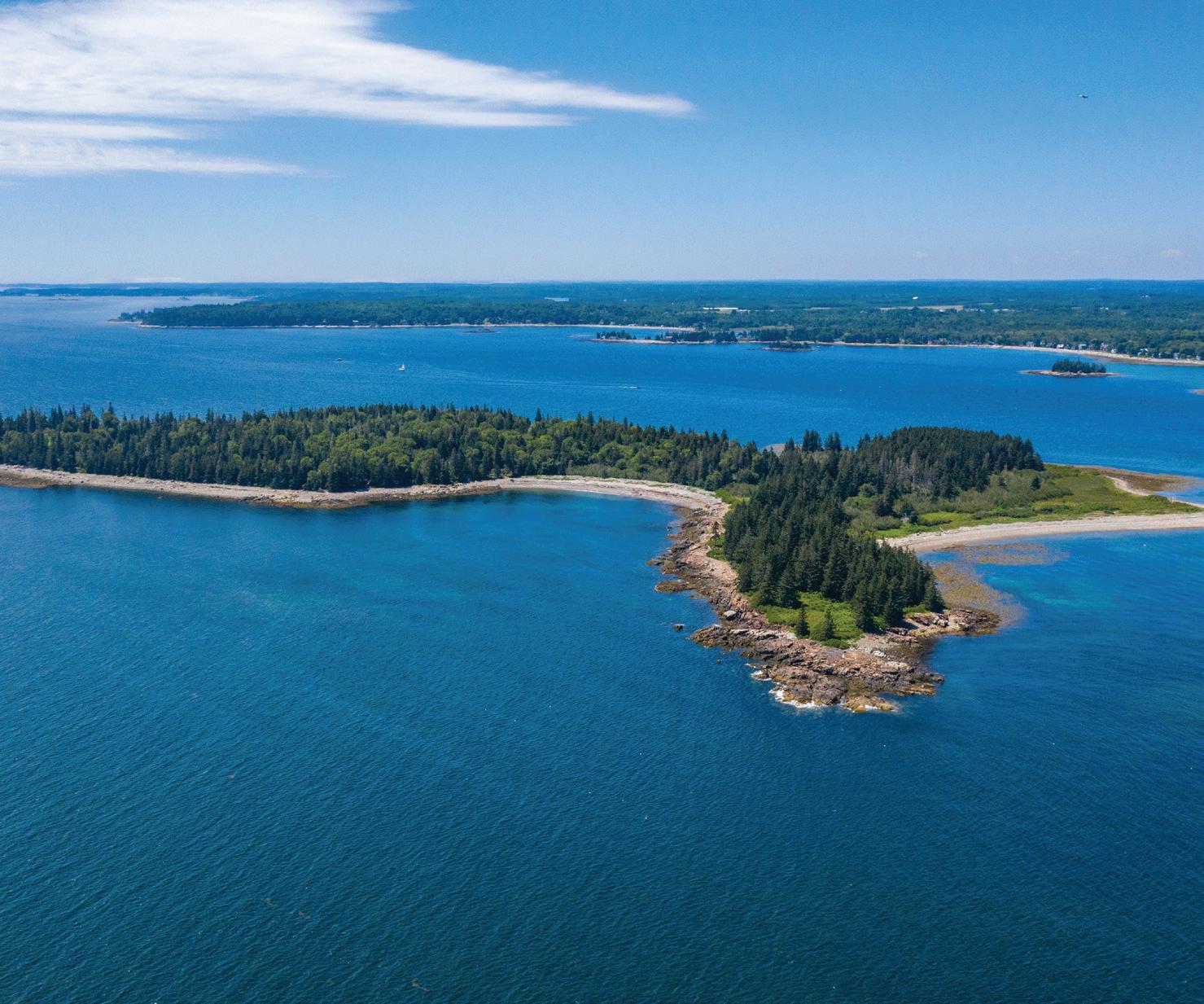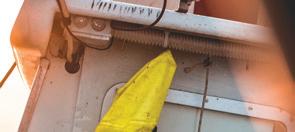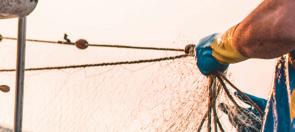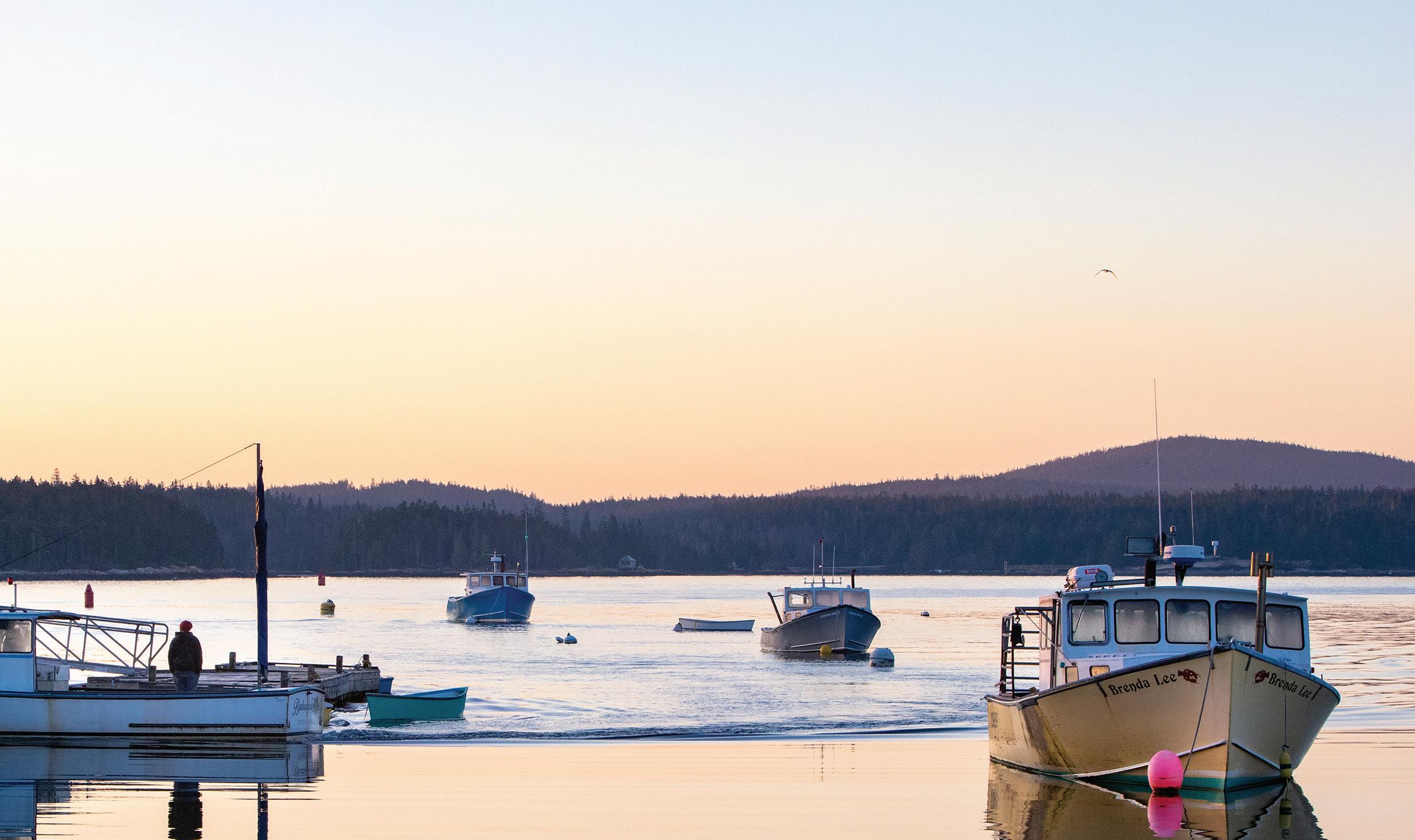The making of a coastal state park
When the Civilian Conservation Corps came to Camden
BY PAUL KAROFF
On an overcast morning in June 1936, 23 young men scrambled into two brown trucks in Southwest Harbor and headed south. By midday, they arrived at a soggy field beside a fir grove on the outskirts of Camden. There, six Army trucks from Fort Williams in Portland were waiting, loaded with supplies and equipment. The men set to work unloading the trucks and “erecting sufficient canvas” to provide temporary shelter.
The cook dug a fire pit for his field range. A truck was sent to the Camden Fire Department to bring back water. The leader of the group, Army Reserve Capt. Herbert C. Pendergast, went to town and returned with a ham, one slice of which comprised each man’s first meal at camp.
The men were issued candles and mosquito netting. When they laid down on folding cots, propped on shims because of the slope of the hill, a cold fog rolled in from Penobscot Bay. It would rain for eight of the next nine days.
So began the 1130th Company of the Civilian Conservation Corps. Over the next six years, hundreds of CCC boys spent thousands of man-hours reworking the landscape—clearing undergrowth, building roads,
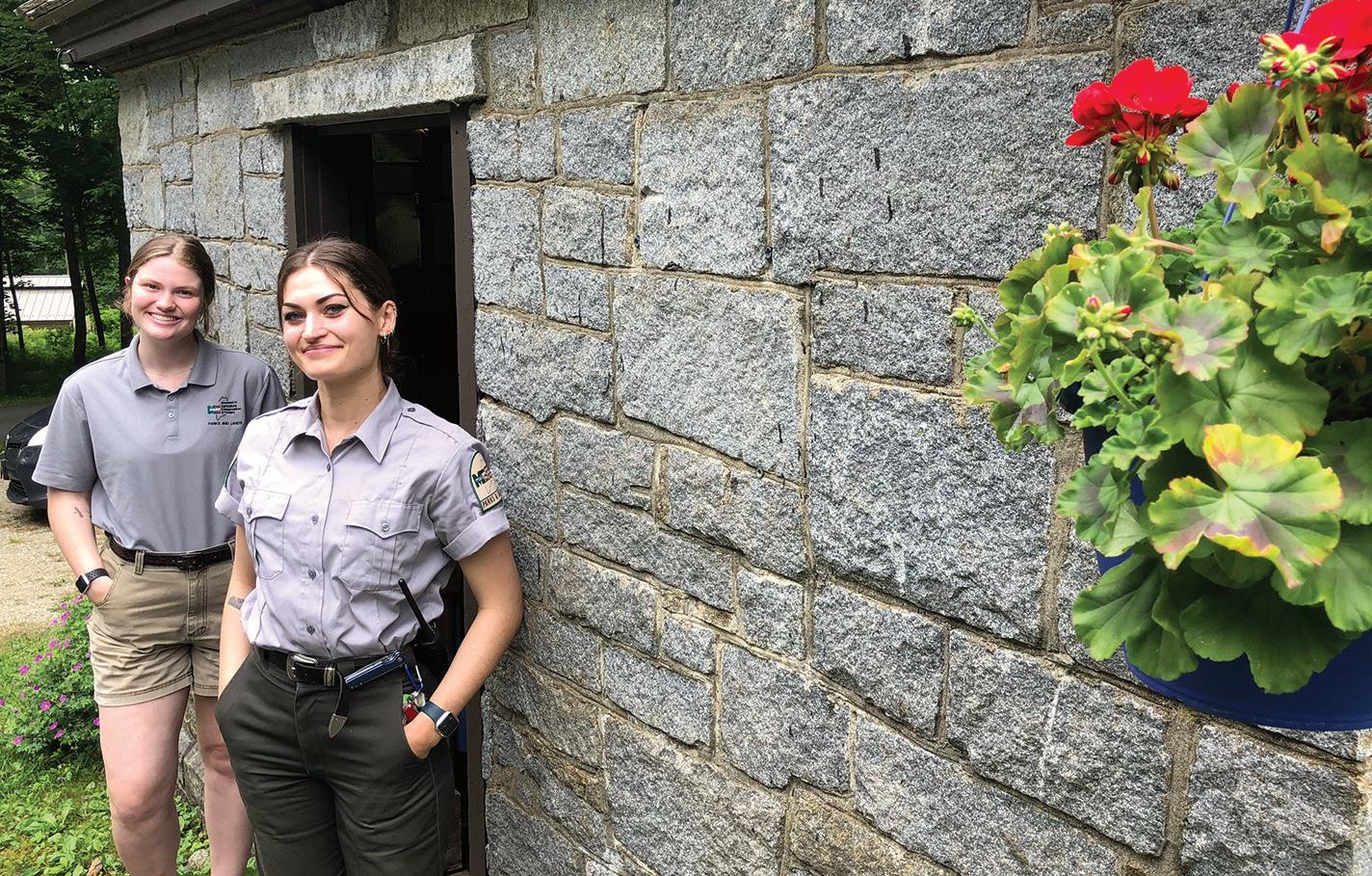
trails, and structures, creating water and sewer systems— to create Camden Hills State Park. They did this work largely by hand; no power chain saws, only axes, hand saws, two-man crosscut saws, shovels, and pick axes.
More than 80 years after the CCC camp closed, many of the projects those men completed have been lost—there is nothing left of an ingenious timber bridge that used no nails, and a mile and a half of downhill ski trails have been reclaimed by nature. But
key elements have endured, from the stone stairways on countless hiking trails to the elegant entry gate and gatehouse to the current park director’s quarters to Tanglewood Camp along the Ducktrap River. The federal government had acquired 4,331 acres in Camden and Lincolnville for the “Camden Hills Mountain Park Project.” According to a report in the Rockland Courier-Gazette, the 58 parcels purchased
continued on page 4
‘Glamping’ is growing, but not always welcomed Ordinances need updating, impact to resources considered
BY WILL ROBINSON
Ferncrest Acadia is one of the newest glamorous camping or “glamping” businesses to come to the coast of Maine. Its futuristic geodesic
domes sprang up on a former blueberry barren that once housed a local take-out shack and mini golf course in Sedgwick, a small town on the Blue Hill Peninsula.
Ferncrest Acadia’s owner, Caleb Scott, also operates a small traditional
campground in nearby Deer Isle. After a few years of operation, Scott’s 4-acre camp reached maximum capacity. He decided to expand into Maine’s rapidly growing glamping industry.
“Glamping is still new, but in the years to come, I see it as essentially a blue ocean. [The market] is wide open,” he said.
Ferncrest Acadia is expected to open in early August. Like a lot of glampgrounds in the region, Scott’s new venture was set against a vocal group of neighbors and residents who had a host of objections to the project.
features 400-square-foot plastic-covered domes with windows, offering panoramic views of the landscape.
“ They have beds, they have premium amenities but they have the ability to disconnect in the woods.”
As its name suggests, glamping is a marriage between the natural setting of a campground and the glamorous amenities of a luxury hotel.
Other glampgrounds have large “safari style” canvas tents, yurts, cabins, and even tree houses. Most glamping accommodations come complete with king beds, private bathrooms, and electricity. The properties themselves usually feature restaurants, stores, wellness centers, and common spaces for guests.
“Glamping is a hybrid,” Scott said. “It allows people to have the comforts of home. They have beds, they have premium amenities but they have the ability to disconnect in the woods.”
Some of glamping’s allure comes from its unusual dwellings. Scott’s glampground continued on page 9
Landings reports: good science, but unpopular
Lobstermen must report a host of data points to state
BY STEPHEN RAPPAPORT
From the shore, the life of Maine’s lobstermen may look idyllic. They work their own hours and set their gear wherever they want. They enjoy spectacular sunrises and vistas of the open sea and the magnificent coast. And, at least from that shoreside perspective, they are unfettered by the constraints that limit most who work ashore.
Of course, that’s bunkum.
Lobstermen do set their own hours, but most hit the water long before dawn and work well into the afternoon. And where they can set the hundreds of traps they fish is limited both by law—generally lobstermen may set their gear within three miles of shore and only in the defined lobster management zone in which they’re registered—and by local convention.
No fisherman has legal claim to any particular piece of the ocean floor, but generations of Maine lobstermen have informally marked out sections of fishing bottom where strangers who set gear may find buoy lines tied in knots when they come back to haul. And those sunrises and vistas? Maine lobstermen spend a lot of their time poking around in dungeon fog and near zero visibility or struggling to work their gear in seas that would keep any reasonable recreational boater snug at the dock.
But those travails aren’t the worst of it.
Rough seas, cold rain, blinding fog, they’re all parts of the life that lobstermen freely choose. What they haven’t chosen, and what many lobstermen hate, is the sense that they are under government surveillance whenever they are fishing and, for some, even when they aren’t.
Since the beginning of 2023, Maine lobster harvesters have been required to report detailed information about their fishing activity to the state Department of Marine Resources on a daily, or trip level, basis. The reports may be filed either by using an app, “VESL,” via smartphone or tablet, or by using DMR’s computer-based “LEEDS” program. Reports must be filed at least monthly, and the penalty for not filing is the inability to renew the required annual lobster harvester’s license.
Kristin Garabedian, a community development officer at Island Institute, has been talking with lobstermen and helping them learn the intricacies of the reporting system which, she said, calls for “a lot of information at a granular level” using systems that can be “confusing and difficult.”
That’s an understatement.
The LEEDS report for each trip calls for specific information:
• the number of traps, and the number of multi-trap trawls, hauled
• the total number of traps and buoys in the water
• the depth at which the traps are set
• the number of crew
• how long the traps “soak” (stay in the water between hauls)
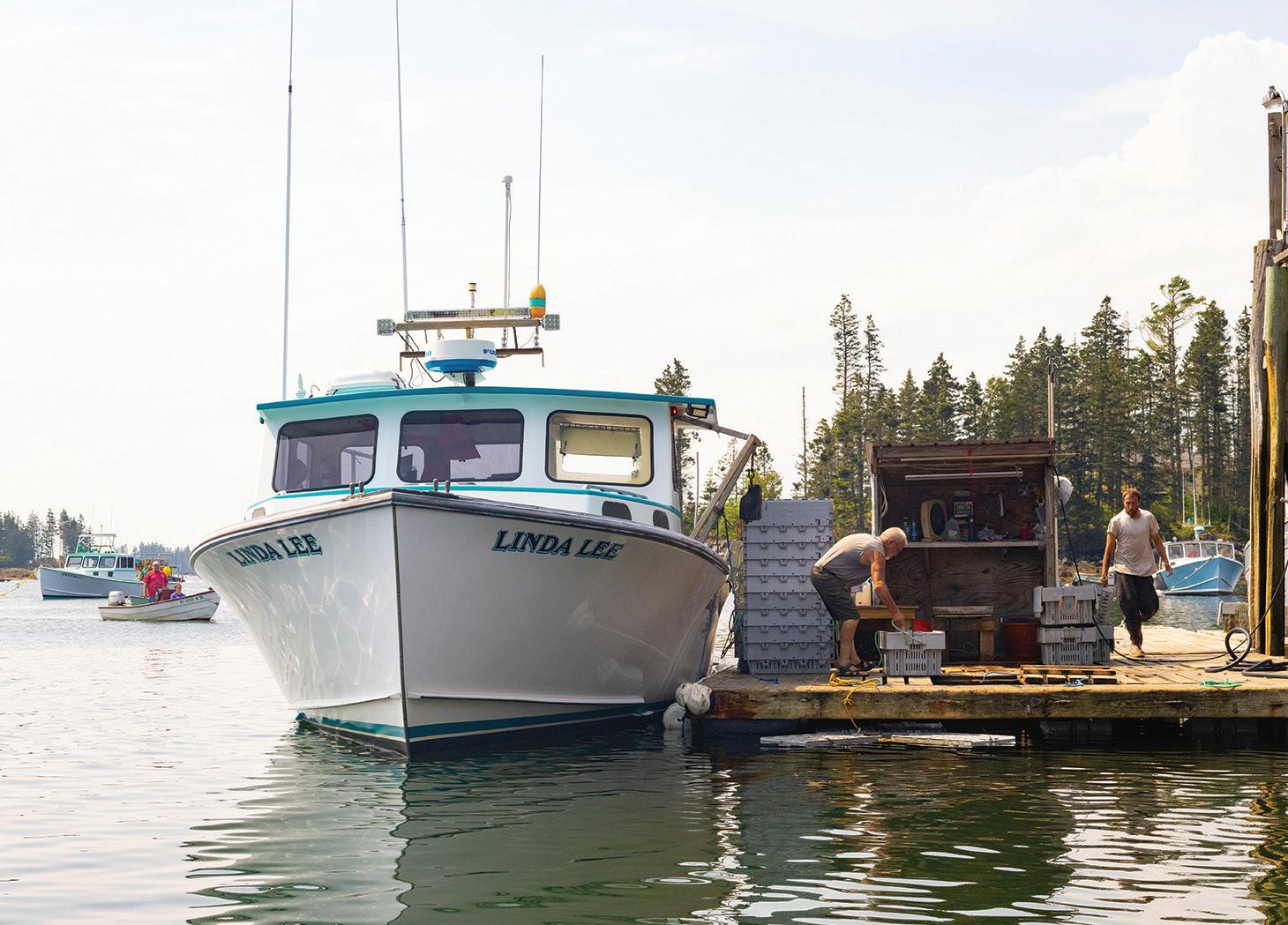
According to Garabedian, lobstermen have expressed “a lot of frustration,” both about the complexity of the reporting systems and the fact that the fishermen are not able to access their own data once it has been submitted. And some fishermen just don’t have access to the technology that reporting requires.
Hilton Turner, president of the Downeast Lobstermen’s Association and a longtime Stonington lobsterman, raised the same issue recently while talking about the many problems inherent in the reporting system. Many lobstermen, especially the older ones, don’t have computers, and some don’t even have smartphones. A friend of Turner’s, like many lobstermen who aren’t technologically savvy, pays someone to file his reports, but he still has to manually compile the data for every trip.
The rationale behind installation of the trackers is, according to DMR, “to collect high resolution spatial and temporal data…”
• the length of the trip in hours, the location where traps were hauled, based on nautical charts showing each of the state’s lobster management zones divided into numbered, roughly 10-squaremile sections.
The reports also call for the quantity of lobster landed and information about where that occurred, whether at a dealer or elsewhere.
Turner’s wife, a teacher, does his filing, presumably on an unpaid basis.
“If it weren’t for my wife, I’d have it all messed up,” he said. Most lobstermen who fish only in state waters, and not in federal waters outside the three-mile limit, rely on LEEDS rather than the smartphone VESL app that fulfills both state and federal reporting requirements.
Lobstermen with permits to fish in federal waters have even more to deal with. In addition to the required reporting, each boat must be equipped with an electronic vessel tracker that operates 24 hours a day, seven days a week, and transmits the vessel’s position via cellular service once per minute while the boat is moving and every six hours when it isn’t underway.
The only time the tracker may be turned off is if the boat is powered down for at least a month. That’s usually during the winter when many boats are ashore.
The rationale behind installation of the trackers is, according to DMR, “to collect high resolution spatial and temporal data to characterize effort in the federal American lobster and Jonah crab fisheries for management and enforcement needs.” That will “improve stock assessment, inform discussions and management decisions related to protected species and marine spatial planning, and enhance offshore enforcement.”
Turner’s son fishes in federal waters, reports via VESL, and has a tracker on his boat. He regards the reporting system as “a POS” that frequently malfunctions, or spits back data or even changes what has been entered.
Despite complaints about required universal reporting, recently appointed DMR Commissioner Carl Wilson said the collection of detailed landings and fishing data is critical for Maine’s lobster industry.
“The requirements for 100% of Maine lobster fishermen to report landings and for federally permitted lobster vessels to install trackers are now providing a complete picture of effort in Maine’s lobster fishery as well as greatly improved spatial information on where the fishery is occurring,” Wilson said in late June. “This is critical for targeted, effective regulations that maximize resource protection and minimize adverse impacts to commercial fishing, whether in management of the lobster fishery itself, or the pending federal whale regulations.”
Turner understands the need for good data but, unlike Wilson, he has to deal with the reporting requirements on a daily basis and has a different perspective about them.
Filing those reports “every day, year after year” can be frustrating, Turner said. “We don’t want to be bookkeepers,” he said. “We just want to be working men.”
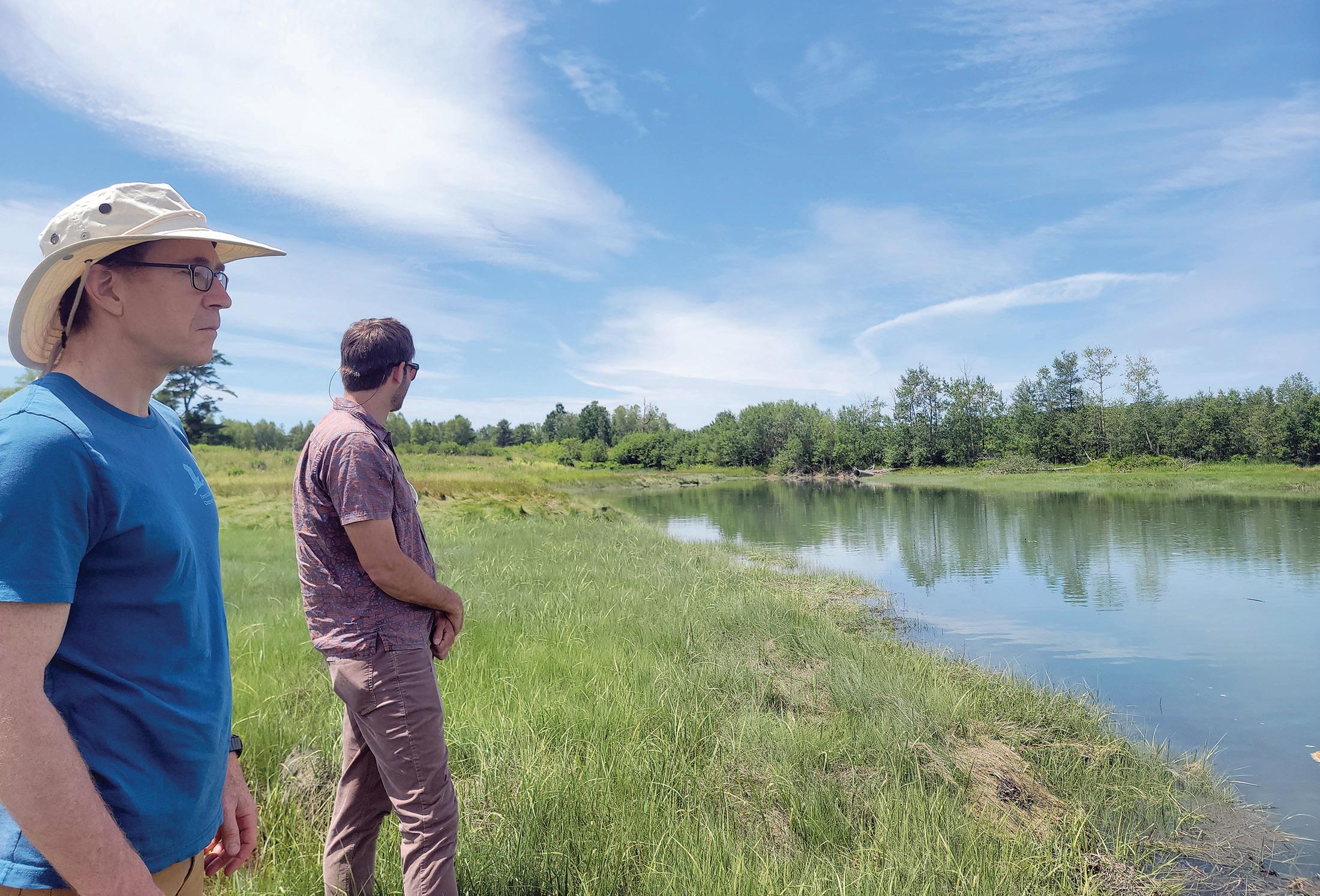
Greens gone wild Former Hancock County golf course returned to nature
BY CATHERINE SCHMITT
On a hot morning in late June, the western shore of Jordan River in Hancock County teemed with wildlife. Osprey and cliff swallows soared over a sea of tall grasses, where bobolinks and savannah sparrows perched atop clumps of alders. Fritillary and crescent butterflies wandered among blooming clover and daisies; deer had worn tracks through the grass. The air smelled of wild strawberries and the salt water that bordered the rolling fields.
Except for the occasional sand pit and numbered granite pillar and lowslung wooden clubhouse at the top of the hill, it would be easy to forget that not too long ago, this land hosted an 18-hole golf course, and before that a dairy farm.
In 1967, local residents, funded by individual donations and a federal government loan, constructed the Jordan River Country Club on 150 acres between Route 204 and the Jordan River, an estuary of Frenchman Bay. It never became the community recreation center they had envisioned. Over the ensuing decades, various owners continued to manage the site as a golf course. On what was billed as “Maine’s most scenic and challenging 18-hole golf course,” closely clipped greens, separated by trees planted in lines like strands of beads, surrounded
a large pond created to provide irrigation for thirsty grasses, to keep the greens, well, green.
Undamming that pond is now the core element in Frenchman Bay Conservancy’s plans to restore ecological function of the property, according to the group’s director, Aaron Dority. Funded with $2 million from the U.S. Fish and Wildlife Service National Coastal Wetlands Conservation Grant Program, as well as support from The Nature Conservancy, Maine Coast Heritage Trust, Anahata Foundation, Maine Natural Resource Conservation Program, Broadreach Fund, and private donors, the land trust will reconnect streams to the sea and allow the fringe of salt marsh to expand inland.
The marsh was the primary motivation for purchasing the property in 2023, said Dority. Though relatively rare in Maine, salt marshes play an outsized role in providing habitat for fish, birds, and other wildlife while keeping water clean, protecting uplands from storms, and storing carbon. Marshes are also at risk of disappearing beneath rising seas.
explaining the project to staff members Chrissy MacKinnon and Mike Whittemore as they walked along the earthen berm that separates fresh water from salt water.
A defunct culvert stuck out from the side of the berm, the pond’s exit channel eroded by recent storms. In August, work will begin to remove bridges and culverts from beneath old fairways, uncovering long-buried streams.
“We’ll let forest regrow over most of the greens, but we’ll also maintain some area as open meadow to sustain birds as well as bees and other pollinators,” said Whittemore.
For those who consider golf courses symbols of everything wrong with the state of humannature relations, the idea of “rewilding” is a dream come true.
“This is a place where we could support marsh migration,” he said,
The land trust is working with Maine Department of Inland Fisheries and Wildlife and U.S. Department of Agriculture Natural Resource Conservation Service to assess wildlife habitat.
Back in 1967 when the Jordan River Country Club was created by Charles Katsiaficas and Kenneth Blaisdell and other locals, it was open to tourists but was meant primarily to serve Hancock County residents.
Frenchman Bay Conservancy has similar intentions. It has retained access
for marine worm harvesters to more than one mile of coastline and plans to create accessible trails so that more people can experience the place. The gentle slopes and grass foundation are well-suited to trail construction, said MacKinnon.
For those who consider golf courses—with their sterile, sculptured terrain of imported plants constantly mowed and sprayed with chemicals— to be symbols of everything wrong with the state of human-nature relations, the idea of “rewilding” is a kind of dream come true. But a golf course is still green, open, unpaved space.
Because the land was a golf course, said Dority, it remained intact and retained the possibility of once again becoming forest, stream, and salt marsh.
“Rather than demonizing the property, we want to help people see something different in the land,” said Dority.
The groundcover may be imported but it is nevertheless alive and growing. The soil may have chemical residue from years of fertilizer and pesticide treatments, but it is still soil, layered and deep. Native plants and trees, kept as screens and scenic backdrops, flourish around the edges.
Standing amid the waist-high wildflowers, looking out at fish jumping from the sparkling turquoise waters of the Jordan River, the team did not have to work too hard to, once again, imagine the property as a community resource.
STATE PARK continued from page 1
included “many poor farms which are unable to support their present owners.”
The CCC camp was located a mile north of Camden village off Route 1, on the site of the former Sagamore Dairy Farm, whose buildings had burned down years earlier. Within weeks, the initial CCC cadre was augmented with reinforcements to help construct permanent camp buildings—four barracks, each housing 50 men, a laundry/bathroom, kitchen and mess hall, recreation building, infirmary, administrative building, officer housing, garages for trucks and equipment, repair shop, blacksmith shop, and tool building.
At 10:40 a.m. on Aug. 10, 167 new CCC enrollees stepped off a train at the Rockland railroad station. An hour later the group arrived in Camden and were soon having their first meal in the camp mess hall. For the next six years, a steady complement of 200 men rotated through, toiling to carve a park out of the Camden Hills.
Arguably one of the most successful Great Depression-era jobs programs, the Civilian Conservation Corp—sometimes called Roosevelt’s Tree Army—employed three million men in conservation-related work from 1933 to 1942.
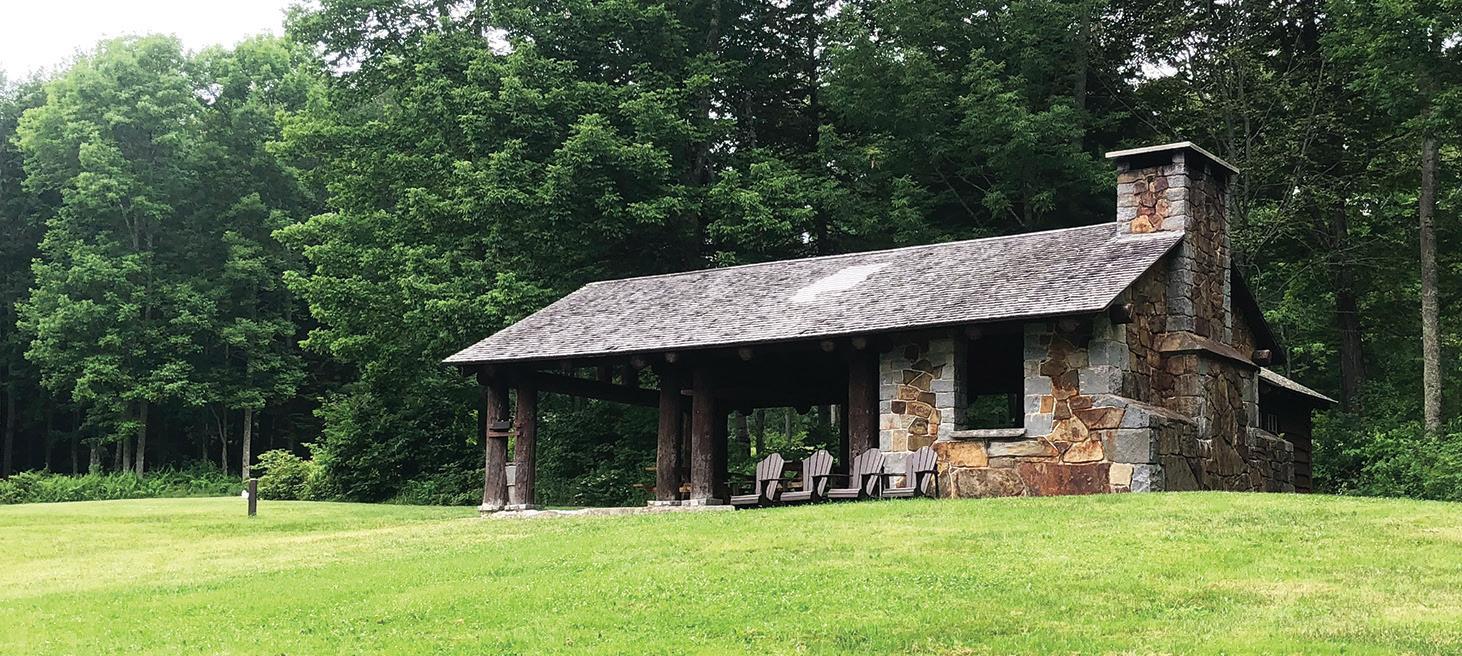
One in four American workers was out of work at a time when most households relied on a single income. Bank closures, and home and farm foreclosures were sapping the economic vitality and morale of communities from coast to coast. People skipped meals,
Aquaculture for People and Planet
OUR
7
TH CLIMATE OF CHANGE FILM
Join us for a free screening of Aquaculture for People and Planet! Learn how Maine’s shellfish and seaweed farmers are leading in lowcarbon, climate-friendly food production. This short film from our Climate of Change series highlights how Island Institute is supporting a resilient, sustainable seafood economy. A panel of local aquaculturists and Island Institute staff will explore the promise of low-emission, locally grown seafood—and how Maine can lead the way.
turned off their heat, and sometimes electricity as well, inserted cardboard scraps in holey shoes, and used paper from free shopping catalogs for toilet paper.
The prospect of three square meals and steady work was attractive to boys who were going hungry
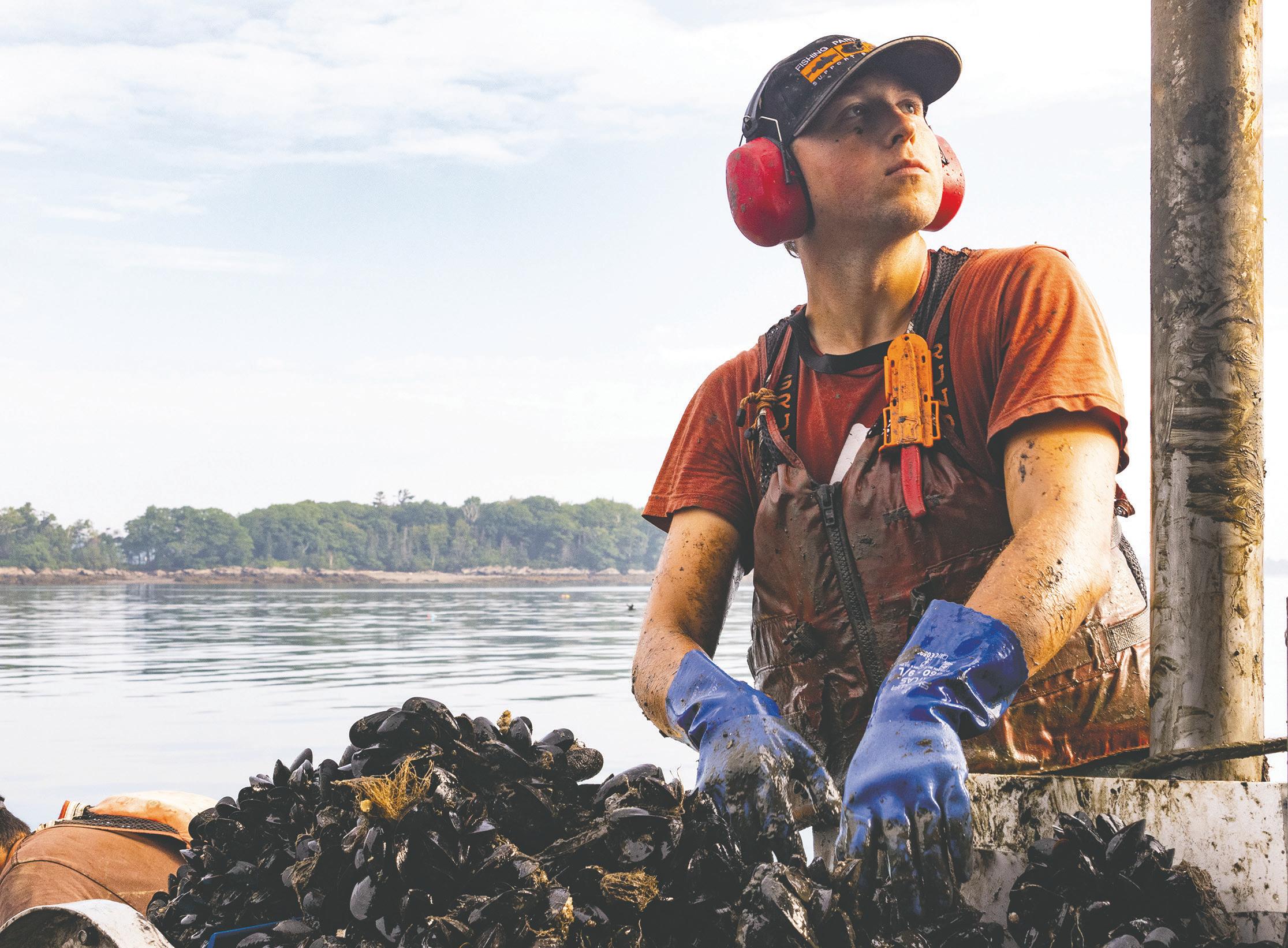
JULY 21 FILM PREMIERE!
7:00 pm-8:30 pm | Lincoln Theater, Damariscotta
AUGUST 26
7:00 pm-8:30 pm | Neighborhood House, Northeast Harbor
AUGUST 27
7:00 pm-8:30 pm | Opera House Arts, Stonington
SEPTEMBER 24
7:00 pm-8:30 pm | Maine Beer Company, Freeport






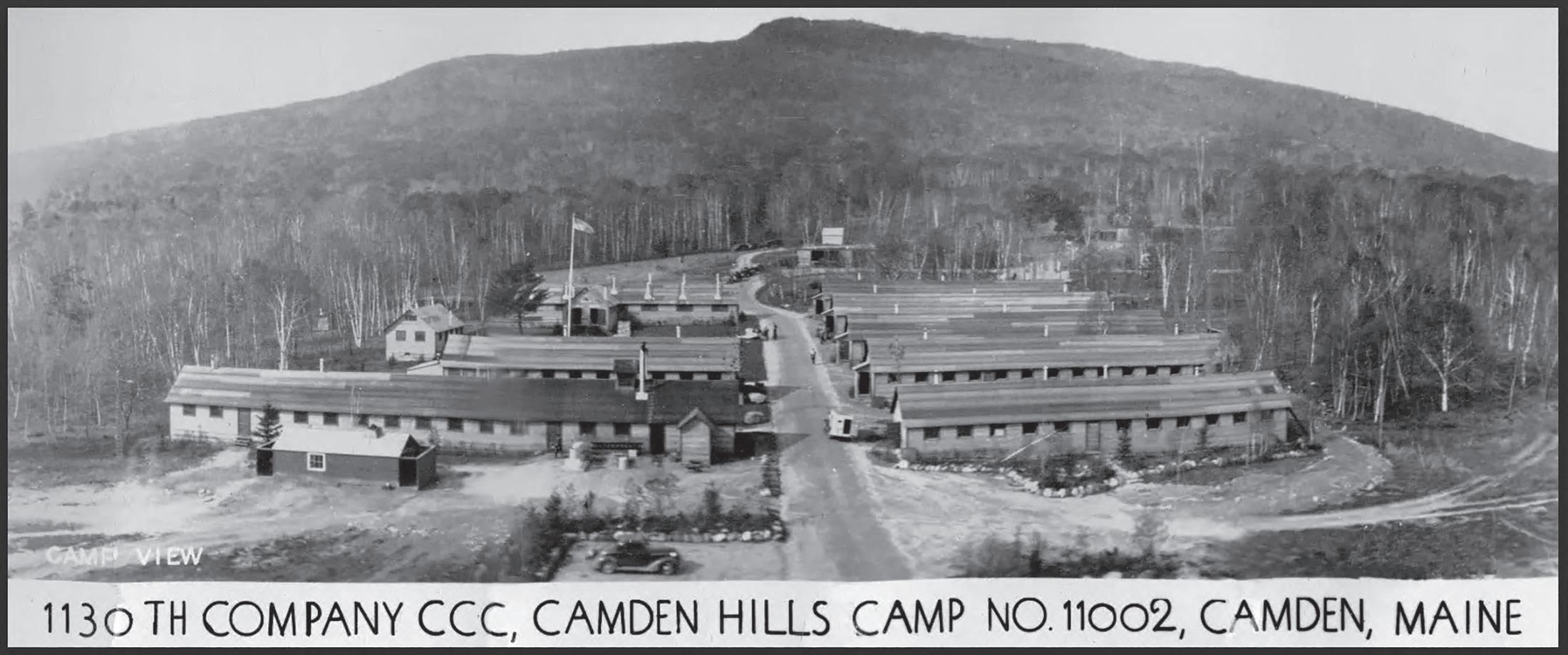
at home or, in some cases, had no place to call home. In fact, even among those who cleared the physical fitness bar, 75 percent of CCC enrollees entered underweight, many weak from malnutrition.
Snaring a spot as a CCC member was competitive. By 1939, only one in five applicants was selected. Enrollees had to be 18 to 25 years old, physically fit, unmarried, and unemployed. They were paid $30 a month, of which $25 was sent to their family. The CCC also provided spots for smaller numbers of out-of-work World War I veterans (no age or marriage restrictions), as well as so-called Local Experienced Men from the immediate community who could train the regular recruits in the skills needed to accomplish their work, such as handling an axe or forestry management.
In the April 1936 issue of The Sagamore, the Camden camp newsletter, the CCC was described as having “two fundamental objectives: the completion of worthwhile projects and the building of manhood … In the Civilian Conservation Corps camps many opportunities are given you that are not to be had on the outside: honest work, the chance to learn different jobs, religious, social, athletic and educational advantages—these are all here.”
In addition to stable employment, educational opportunities were a core component of the CCC. Most enrollees had no more than a high school education and thousands of boys learned to read and write thanks to the camp education programs. The Camden camp provided courses four evenings a week in practical subjects such as business, arithmetic, automatic grease gun operation, blacksmithing, English grammar, first aid, typewriting, diesel engines, etiquette, navigation, and auto mechanics. There were also less academic offerings: radio club, boxing club, bow and arrow making, fly fishing, orchestra.
Camden was one of 28 CCC camps in Maine, each with a complement of roughly 200 men, in addition to 50 “side camps” with 50 to 75 men. More than 16,000 Mainers found employment in the CCC. They worked on what became Acadia National Park, Baxter State Park, hundreds of miles of fire roads, dozens of fire towers, telephone lines, erosion control, water and sewer lines, tree planting, rip rap projects, and forest insect and disease control.
The 1130th Company in Camden worked under the direction of Hans Heistad, a gifted landscape architect who was the visionary behind the most iconic elements of the fledgling park. The stone park gate and gatehouse were Heistad’s design, as was a cascade and rock picnic area on the lower Sagamore section and the warming hut at the base of the ski trails on the east slope of Mt. Megunticook.
“We don’t disturb nature. We just improve on it,” Heistad told a Rockland Courier-Gazette interviewer. “We make a picture out of the material God has let us have.”
Company leaders submitted a comprehensive park master plan for approval by CCC authorities in Washington. Work progressed on a project-by-project
basis, with detailed accounting of man-hours and materials expended on each aspect of the park’s construction.
Not everything in Heistad’s master plan was realized. The CCC never dammed several streams near Spring Brook Valley to create a fishpond. Nor did his most ambitious vision come to fruition: a 1,500-seat amphitheater carved into the hillside of the lower Sagamore section, appointed with stone terraces and overlooking Penobscot Bay to Islesboro, Vinalhaven, and North Haven.
The CCC crews built Tanglewood Camp on a 50-acre tract along the Ducktrap River in Lincolnville, including 40 rustic buildings with capacity for 72 campers plus staff, and an 80-by-120-foot swimming pool supplied by an artesian well.
In 1939, when the YWCA of Bangor and Brewer occupied it, the Bangor Daily News described Tanglewood Camp as “a modern recreational project built by the government as a demonstration of the best in architectural planning for a character-building camp.” Today, the University of Maine Cooperative Extension operates a 4H camp there.
When they weren’t building picnic areas, scenic drives, hiking trails, camp sites, Adirondack-style shelters for use by overnight hikers, a fire lane around the 5,000-acre park property, or planting more than 7,000 trees and shrubs throughout the park, the men of the 1130th Company were put to work away from Camden. Fifty members worked for weeks-long stretches at a “side camp” near Katahdin, building the truck trail into Roaring Brook Campground in the recently created Baxter State Park. Camden CCC boys were called on to fight forest fires in nearby Lincolnville and as far away as Boothbay Harbor and assisted in search and rescue missions. On at least one occasion, they helped search for an escaped prisoner from the Thomaston prison.
While Americans generally supported the CCC, many residents were apprehensive about a camp being sited in their community. Locals fretted about how 200 young men fresh off the breadlines and unaccustomed to discipline would behave when they ventured into the local community on a Saturday evening. But the record suggests a symbiotic relationship between Camden’s CCC boys and the host communities.
Camp leaders regularly emphasized the need for the boys to comport themselves in ways that would reflect well on the reputation of the camp. In March 1937, Commanding Officer Capt. M.D. McLaughlin wrote: “The boys of this camp have been well received by the inhabitants of Camden and have many friends there. They have entered social life, assisting social groups in putting on shows and so forth. Some of the enrollees have taught in church schools and have done other church work as well.”
At Christmas, CCC boys repaired toys for needy children. During the winter of 1940-41, CCC enrollees volunteered weekends to help with the construction of a ski jump and other elements of what is today the Camden Snow Bowl at Hosmer Pond.
In turn, Camden and Rockland schools loaned 3,000 textbooks for the camp library and education programs and enrollees had borrowing privileges at the Camden library.
Not only did men serving in the camp’s close quarters form lifelong friendships, more than a few men struck up romantic relationships with local girls that led to marriage.
Most of the senior leaders of the 1130th were commissioned officers or had military backgrounds. Some were veterans of “the World War” (in those years, few contemplated a second great global conflagration).
The Roosevelt administration explicitly fashioned the effort as a civilian undertaking, resisting voices advocating a more military flavor. As the years passed, some questioned that approach. By 1936, some members of Congress proposed giving CCC boys limited military training and weapons familiarization. Three years later, 75 percent of respondents to a Gallop survey thought that “military training should be part of the duties of the boys in the CCC camps.”
While no such change was ever implemented, CCC enrollees nevertheless benefitted from military discipline.
“All aspects of our lives as CCC boys were Armyoriented,” wrote Norman Wetherington of the 1124th Company in Bridgton. “We lived by Army regulations and ate Army chow. Our clothing, equipment, and inspections were Army, much of which was World War I vintage. The one exception to regulations was that we did not have to salute our officers. We were a civilian organization.”
The U.S. officially entered the war on Dec. 8, 1941, the day after Japan’s attack on Pearl Harbor. CCC camps across the country were closing because the men were needed in uniform. Ultimately, the training and physical fitness of CCC men qualified them for quick acceptance into the armed forces and 90 percent went on to serve.
On August 8, 1941, the Camden Herald carried a three-paragraph item at the bottom of page 2 reporting that the 1130th Company had left town. By then, only 78 men were still at the camp; 48 transferred to Bar Harbor and 30 to the camp in Alfred. As CCC members went to war, the Camden camp became home to an army detachment.
The 1130th Company “successfully carved a ‘park’ out of land that had been lumbered, burned over, and neglected,” recalled Earlyn W. “Stubbie” Wheeler of Rockport, a foreman at the camp. “It left its mark on the community and on the hundreds of enrollees that came and went during its existence.”
Nationwide, the CCC instilled in thousands of men a deep appreciation for conservation goals and principles, values they shared with their families and communities.
The state of Maine took over management of the Camden Hills State Park in 1947.
The power of big dreams
High-speed internet casts a net to the world
BY KIM HAMILTON
MY HOME on Chebeague Island entered a new age last year—we finally connected to high-speed internet. Honestly, it’s so simple now that it’s difficult to remember being on the wrong side of the digital divide, where telehealth, telecommuting, and teleanything was out of reach.
The opportunities on the other side of that digital divide have long been apparent to Island Institute. With rural, coastal, and island communities already struggling for resources and attention, we knew that broadband offered a pathway for a different future. This is why we tackled the challenge head-on beginning in 2013 when the consequences of exclusion were already in play.
Small businesses could not compete with others that had better, faster connections. Islanders with health issues easily managed through a remote visit faced long commutes and delays. Seniors longing for more frequent community and family connections were especially feeling the brunt. And of especially high concern, young
people and young families dependent on reliable, high-speed access could not aspire to work in the community in which they lived.
There isn’t a one-size-fits-all pattern for high-speed internet in small communities. That’s why we developed an approach as unique as the communities we serve.
Our community-driven broadband process provided a model that engaged communities in designing the future they wanted from broadband. This included assessing the true costs over time, structuring a partnership with a provider, and considering universal access for all community members.
Over the past ten years, we have provided nearly half a million dollars in broadband planning grants to help communities better understand how to move forward. We helped secure more than $50 million in public and private funding to support community initiatives.
Working with partners, we also helped lead a successful $15 million bond campaign—resulting in the largest investment to that date ever made by the state in high-speed internet expansion.
rock bound from the helm
This sort of community-driven work is a true long game. In June, Island Institute joined a community ribbon-cutting ceremony on Isle au Haut to celebrate the completion of a project that has been almost a decade in the making.
This was no small feat. It required laying 6-and-a-half miles of cable from the island itself to Stonington and from there to a central network. It also called on community volunteers who had the staying power and passion for a long game. For this community of 50 year-round residents, broadband became a foundational investment in their future and worth the wait.
Access to broadband isn’t enough, of course. Knowing how to use the new technology is just as important. For example, all commercial lobster license holders are now required to report electronically the location and the amount of their catch every month.
Working in Stonington with the Connectivity Hub and the Maine Center for Coastal Fisheries, we’re helping to train lobstermen on new electronic reporting requirements. In this way, we’re building critical digital
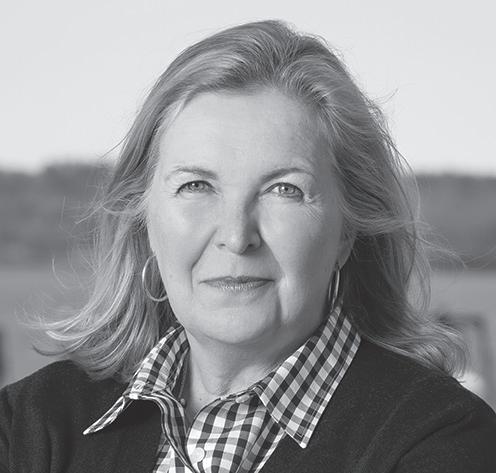
literacy skills that turn broadband into the Swiss army knife of community solutions.
Nick Battista, our chief policy and external affairs officer, likes to say, “Never bet against an island community when they want to go big.” Isle au Haut — like Bremen, towns along the Blue Hill Peninsula, Chebeague, and many others —is an extraordinary example of a small community doing big things.
The audacious tenacity that brings these big dreams to life in small communities is the secret sauce we like to invest in. It’s even sweeter when these big dreams become reality and ensure the places we love most can remain a home for generations to come.
Kim Hamilton is president of Island Institute, publisher of The Working Waterfront. She may be contacted at khamilton@islandinstitute.org.
Camping adventures and misadventures
The call of the wild has grown much quieter
BY TOM GROENING
THIS ISSUE of The Working Waterfront features a story about the emerging trend of “glamping,” a term coined to describe a version of camping that’s a bit more glamorous.
I’ve had some camping experiences, most of which weren’t glamorous.
My father, being a schoolteacher, had summers off, and after several summers of working odd jobs during the break, he purchased a small travel trailer and lugged my mother and my three brothers and I off to various national and state parks.
A memorable trip came in 1965 when we and another family traveled from home in New York across the country, visiting many of the iconic national parks—Grand Canyon, Zion, Yellowstone, Yosemite, Grand Teton, Glacier, and Crater Lake among them. Even at the tender age of six, the images of those dramatic landscapes— reinforced by home movies—left their mark on my understanding of the beauty and scale of our country.
Later summers included trips to Florida (way too hot and buggy), Maine and Quebec (my father’s home movies captured the last of the log
drives on the Kennebec), and then we settled into a series of two-week stays at state parks on lakes in New York’s Adirondacks, working our way north through the summer.
By the time my older brother and I were teens, we rankled at the confines of the small trailer we all shared, and Dad bought us an 8-foot by 10-foot cabin tent, and we would be able to stay up as late as we wanted, reading by the light of a Coleman lantern and listening to New York City AM radio stations beaming the Top 40 hits off the ionosphere.
Being away from our friends for eight weeks during that long school break had my older brother and I longing for home.
rooms, watching re-runs of Gilligan’s Island and Bewitched.
Later, I understood our parents were wise in giving us a more active and wholesome summer.
We would be able to stay up as late as we wanted, reading by the light of a Coleman lantern and listening to New York City AM radio stations…
Once, when the boat’s outboard needed work at the dealership back home, we returned for a few days in late July, and I gleefully biked to my friends’ houses to join in whatever fun and mischief they’d gotten up to. I was surprised to find them lounging in their living
When I was about 12, I won a floorless pup tent for selling chocolate bars as a fundraiser for my Boy Scout troop. The scouts provided a different version of camping, more akin to Lord of the Flies.
My father tells the story of me returning home after a weekend scout camping trip, ranting about the terrible state of the food we ate—undercooked burgers, chicken that had fallen into the fire, dirt on everything. Who did the cooking, my parents asked. “I did.”
Our scoutmaster left us way too under-supervised.
After sleeping with another six or seven boys in ancient canvas tents that leaked, I was pleased to use my new pup tent on one scouting trip. It didn’t leak, as I learned when an older

boy decided to empty his bladder on it as I readied my bedding for the night. For one summer—a full eight weeks—I slept in that little tent by myself, before we had the cabin tent. With the family inside the trailer every night, I would head out to my little tent, the only thing between me and ground a piece of hard Styrofoam. To this day, I wonder what I was trying to prove to myself. I relented in sleeping inside the trailer on the very last night as the temperatures dropped in late August. I relish being outside in glorious summer, in Maine and elsewhere in New England. But at night, I’ll take a nice Airbnb over the fresh air.
Tom Groening is editor of The Working Waterfront and Island Journal. He may be contacted at tgroening@ islandinstitute.org.
ALL IS WELLS AT THE SHORE—
This beach scene from Wells in the 1930s features a grocery store and ice cream shop offering Deering Ice Cream.
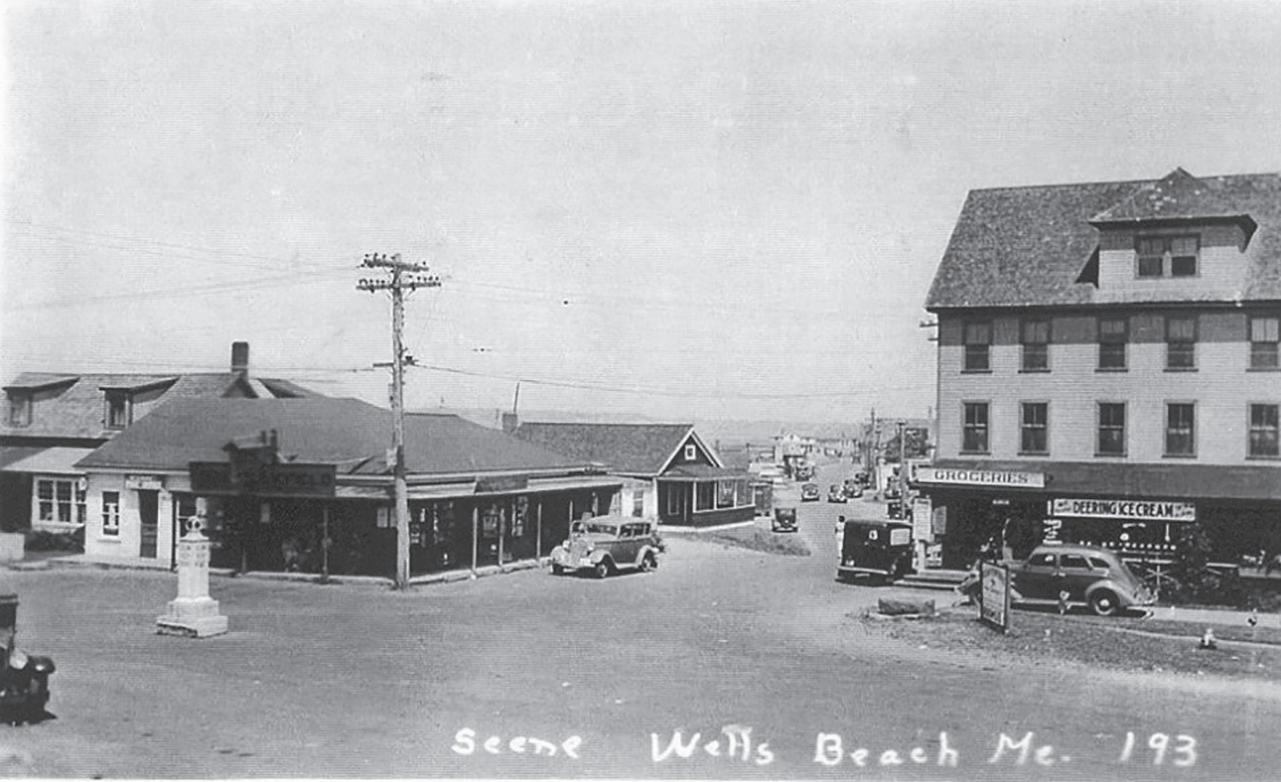
the public’s policy
Good policy comes from informed policy makers
Working waterfront protection is now better understood
With this issue we’re introducing a new, regular column dedicated to exploring and explaining the nuances of public policy at the federal, state, and local levels as it impacts Maine’s marine economy, climate resilience, and community vitality.
BY NICK BATTISTA
FOR THE LAST 20 years, Island Institute has worked on public policy dedicated to protecting Maine’s working waterfronts. In that time, attention by policy makers has ebbed and flowed—and the last year represents the highest watermark yet in terms of substantively advancing this policy area.
Since the fall of 2023, we have made a concerted effort to drive public policy towards addressing the needs of Maine’s working waterfront businesses by expanding the understanding amongst policy makers, working to include these issues in guiding documents for the state, and supporting funding for this sector.
A couple of years back, I remember talking to a colleague who is deeply involved in efforts to retain jobs and grow the economy, about how
Island Institute Board of Trustees
Kristin Howard, Chair
Doug Henderson, Vice-Chair
Kate Vogt, Treasurer, Chair of Finance Committee
Bryan Lewis, Secretary, Chair of Philanthropy Committee
Michael Sant, Chair of Governance Committee
Carol White, Chair of Programs Committee
Mike Boyd, Clerk
Sebastian Belle
John Conley
Shey Conover
David Cousens
Mike Felton
Des Fitzgerald
Christie Hallowell
Nadia Rosenthal
Mike Steinharter
John Bird (honorary)
Tom Glenn (honorary)
Joe Higdon (honorary)
Bobbie Sweet (honorary)
Kimberly A. Hamilton, PhD (ex officio)
important working waterfront infrastructure is to the economy of coastal communities. There was an incredulous look when I started talking about how these facilities have ten to 15 jobs and were absolutely integral to the success of 30, 40, or even 100 small businesses.
Those of us who work in coastal communities understand the vital role working waterfronts play in supporting jobs in our communities, yet this role has not been as clear in statewide discussions.
In the fall of 2023, while working on updating the Maine Won’t Wait climate action plan, we noted a key opportunity to influence the development of a policy document. As this process started, Island Institute convened the Working Waterfront Coalition, and together, we worked through the major issues facing working waterfronts and the potential policy interventions.
Going from the initial framework to the language that appears in specific strategies of Maine Won’t Wait took about nine months and more than 20 public meetings, which included those interested in working waterfront protection and state agency staff. As a co-lead of the group focused
specifically on working waterfronts, I’m proud of the work this group did to come together around key issues.
Some of these ideas eventually became activities included in the state’s successful $69 million resilience grant. Many other policy interventions became part of the 2024 update to Maine Won’t Wait, and these focused on increasing the resilience of Maine’s heritage industries, including protecting critical infrastructure like working waterfronts.
They also informed the development of the working waterfront recommendation in the Infrastructure Rebuilding and Resilience Commission (IRRC) report released in May.
The damage the January 2024 storms did to coastal communities launched working waterfront-related policy from a relatively small, niche issue to a significant issue for policy makers. The storms also revealed that privately owned infrastructure requires new policy solutions. In response, the Legislature provided $25 million in the spring of 2024 to help rebuild those private working waterfronts. These funds start to close a critical gap in public support for this sector.
The clearest articulation to date of the needs of working waterfronts
THE WORKING WATERFRONT
Published by Island Institute, a non-profit organization that boldly navigates climate and economic change with island and coastal communities to expand opportunities and deliver solutions.
All members of Island Institute and residents of Maine island communities receive monthly mail delivery of The Working Waterfront. For home delivery: Join Island Institute by calling our office at (207) 594-9209 E-mail us: membership@islandinstitute.org • Visit us online: giving.islandinstitute.org
comes from the IRRC report where one of the 11 strategies is focused on the need to protect and promote working waterfront resilience. In this strategy, the commission recommends:
• Identifying and mapping the most vulnerable working waterfront infrastructure
• Investing in resilience upgrades for public working waterfronts
• Strengthening the resilience of privately owned working waterfronts
• Creating new policy options, funding, and technical assistance to protect working waterfronts from conversion to non-working waterfront related uses.
• State government is poised to support these goals.
Island Institute looks forward to continuing to partner with the state and members of the Working Waterfront Coalition to advance this important work.
Nick Battista is chief policy and external affairs officer for Island Institute, publisher of The Working Waterfront. He may be contacted at nbattista@ islandinstitute.org.
Editor: Tom Groening tgroening@islandinstitute.org
Our advertisers reach 50,000+ readers who care about the coast of Maine. Free distribution from Kittery to Lubec and mailed directly to islanders and members of Island Institute, and distributed monthly to Portland Press Herald and Bangor Daily News subscribers.
To Advertise Contact: Dave Jackson djackson@islandinstitute.org (207) 542-5801
www.WorkingWaterfront.com
The making of a captain, by intention Alliance trains next generation of
BY CRAIG IDLEBROOK
The making-of-a-fisherman myth we often subscribe to has him growing up on a boat, eventually making captain, and then inherently knowing how to succeed as he takes the helm. In this scenario, the fishing fleet is continuously reinvigorated by the children of fishermen.
In reality, the New England fishing fleet is rapidly graying. For example, the average age of groundfishermen is 55 years old, according to a recent National Oceanic and Atmospheric Administration (NOAA) report.
Regional fishery advocates formed The New England Young Fishermen’s Alliance in 2022 to help the next generation of fishermen and fisherwomen to obtain their own boats and succeed in the industry. Each year, the Alliance offers its “Deckhand to Captain” program, a nine-month-long, free training program that provides aspiring New England captains with the business skills and mentorship to succeed in the region’s fishing industry.
The classes are held Monday nights each week in Portsmouth, N.H. The program has recruited trainees mainly
New England fisherfolk
from New Hampshire, Massachusetts, and Rhode Island. This year, the organization also received a special grant for outreach in Southern Maine from The Builders Alliance, a foundation seeking sustainable solutions for energy and food production.
Such a training program is needed because young people in the fishing industry are facing headwinds when it comes to taking the next step in their careers to becoming captains, says Andrea Tomlinson, the Alliance’s executive director.
These fishermen have witnessed the collapse of New England’s groundfish industry and have seen the cost of doing business rise. They also have seen rapidly changing ocean conditions which affect the health of fish stock, along with the imposition of new regulations. Some of these fishermen are being discouraged by older fishermen from investing in their own boats, she said.
enter the lobster business, and they were quite upset that he entered the training program,” Tomlinson said.
“But we still got his dad, a lobsterman, to be his mentor.”
Since the trainees must have at least three years of commercial fishing experience to be accepted into the program, they already know the work. The program focuses on the other skills needed to be successful in the industry.
Some of these fishermen are being discouraged by older fishermen from investing in their own boats…
“We even had a trainee last year whose family did not want him to
For example, facilitators discuss how to create a business plan and keep accurate business records, and trainees then talk with lenders who provide loans for boat purchases.
Trainees are paired with mentors in the industry who can share their wisdom as small business owners. They also receive training in public speaking, which Tomlinson
said has become a necessity, as fishermen often need to advocate for their industry.
“We are constantly getting media questions,” she said, such as: Are there young fishermen that we can talk to? Are there young fishermen you can bring to this meeting? Can you get them to the council meeting? Can you get them down to the port authority meeting?
The answer to those questions must lie with the young fisherfolk, she said. “We have to teach young people to advocate for themselves.”
Public speaking skills are also important when trying to reach consumers, Tomlinson said. The program helps fishermen think about how they can brand and market their product to get a higher price for their catch.
“We give the fishermen and women a concept that you don’t have to dump your stuff at a low-ball wholesale price to a broker to make a living. You can do that 80% percent of the time, and 20% of the time you can sell direct to consumer in a community-supporting fishery model or in a farm store model,” she said. “Diversification is so key right now.”
LITTLE GREAT ISLAND
“An extraordinary achievement and a pure pleasure to read.” —National Book Award Winner Ha Jin
“A delightful read for anyone in need of a strong dose of Coastal Maine.”
—Linda Greenlaw Wessel, author of The Hungry Ocean and The Lobster Chronicles

AUTHOR APPEARANCES
Vinalhaven Library
August 6, 7pm
North Haven
August 7, 5pm
Anodyne Book Shop
Searsport
August 10, 2pm in conversation with novelists Shannon Bowring and Linda Greenlaw Wessel
Print: A Bookstore
Portland September 3, 7pm in conversation with novelist Nick Fuller Googins and climate sociologist and author Kate Olson, PhD
The glamping industry has generally seen tremendous growth in the past decade. A 2022 report from Kampgrounds of America (KOA) found that the number of U.S. glamping brands grew from 59 in 2012 to 230 in 2022. The report estimates that over 17 million households went on at least one glamping trip in 2021.
A 2025 KOA report shows the number of new glamping guests dropped significantly after peaking in 2021 but has been steadily increasing each year since. It estimates that glampers made up a third of all camping guests in 2024. KOA’s report also found that over 60 percent of glamping guests have children, and almost half are millennials.
In Maine, the area around Acadia National Park, which attracts four million visitors annually, has seen several glampgrounds emerge in recent years.
In 2020, KOA—one of the largest camping corporations in the country—converted its traditional Bar Harbor campground into Terramor, a luxury glamping resort. The Montana-based glamping company Under Canvas opened Under Canvas Acadia in Surry in 2021. In 2022, the glamping site Acadia Wilderness Lodge opened in Tremont, just a few minutes away from Acadia National Park.
“People want to be able to be close enough to attractions that bring them to Maine, but—in our case—they want to have a nice, quiet, relaxing place to come to at the end of the day,” said Dan Cashman, spokesperson for Acadia Wilderness Lodge.
As business continues to grow, glampground development in Maine has run into resistance from towns, neighboring landowners, and groups of residents.
Because the industry is relatively new, glamping developments often aren’t written into local land use laws, unlike motels, hotels, and traditional campgrounds.
In Tremont, the permitting process for Acadia Wilderness Lodge took more than a year while the town grappled with changing definitions in its zoning. The project also faced resistance from a group called Concerned Tremont Residents. The glampground was eventually approved but, in 2023, Lamoine voters passed an addition to its land use ordinance that limited the size and density of all “recreational lodging facilities.”
“A lot of ordinances, especially in small towns, aren’t written to recognize these types of structures,” said Tremont’s code enforcement officer, Angela Chamberlain.

That same year, the Arizona-based company Clear Sky Resorts proposed 90 geodesic domes on a property in Lamoine. The project was halted and ultimately abandoned after residents passed a 180-day moratorium on campground development. Lamoine later added glamping to the list of definitions in its building and land use ordinance.
In 2024, a two-year-long permitting process for a proposed glampground in Deer Isle ended in a lawsuit between the out-of-state developer, the town, and a small group of citizens. The lawsuit was dropped after the developer walked away from the project, eventually selling the 40-acre property to a local nonprofit land trust. Along the way, Deer Isle voters approved a wholly new commercial building ordinance that, among other things, limited the size of campgrounds and glampgrounds.
Scott submitted his permit application for Ferncrest Acadia in May of this year. Within days, a Facebook group opposing the project amassed several hundred members under the banner “Grow the Peninsula Responsibly.”
The group raised concerns about water usage, stormwater management, traffic, and increased use of boat landings and swimming spots. They attempted to block the development with a 180-day moratorium but were unable to complete the process before Sedgwick’s planning board approved Scott’s permit, allowing him to move forward.
The business models of Maine’s glampgrounds are almost as diverse as their lodging options. Some, like Under Canvas in Surry and KOA’s Terramor resort in Bar Harbor, are owned by large companies that operate nationwide. Some small local campgrounds have added a few glamping tents to their existing
sites. Others, like Acadia Wilderness Lodge, are owner operated.
Scott lives year-round near his new glampground. He and his family manage the business, but it is a franchise of Ferncrest, a glamping company based in Pennsylvania. Ferncrest supplies the dome tents, the blueprints for buildings, handles booking, and uses its large social media following to drive marketing. Scott pays an initial franchise fee and a percentage of his annual revenue to Ferncrest.
“[Ferncrest] provides a lot of assistance and support to their franchisees to handle a lot of the back-end stuff,” Scott said. “A lot of the things that, when you start your own business, are a little overwhelming.”
Scott’s 30-acre property is the third glampground in the Ferncrest franchise, with the other two locations in Pennsylvania and Oklahoma. As the glamping industry continues to grow nationally, Scott said the company is looking to expand around the country, with the goal of roughly a dozen new glamping franchisees within a year.
Existing glampgrounds in Maine have also announced upcoming expansions. Under Canvas and Acadia Wilderness Lodge both intend to add more lodging capacity over the next several years.
Cashman, speaking for Acadia Wilderness Lodge, said the glamping resort sees about 1,500 guests per season with its eight yurts. The company hopes to add more yurts and glamping tents to meet a growing demand.
“We know that we are not alone in this business, so it is gaining traction through our efforts as well as other operators who are acting in good faith,” Cashman said.

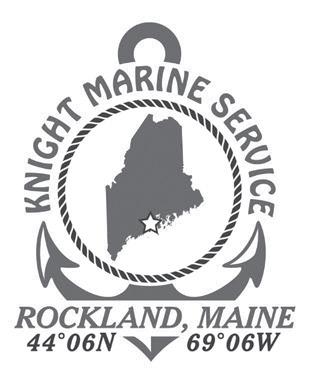


Contact Dave Jackson:



Downeast boat school sees revival
New life as ‘Maine Marine Technology Center’ expected
BY LURA JACKSON
The Boat School is riding a wave of momentum as the Eastportbased institution nears the completion of the first of six steps in its revival. The famed school, which opened in Calais in 1969 before moving to Lubec in 1971 and settling in Eastport in 1978, could reopen as the Maine Marine Technology Center within the next few years if supporters have their way.
Since its earliest years, the Boat School has been a lifeline for students involved in boatbuilding and its various associated industries.
For Dean Pike, who was born in Lubec, it was a way to stay in the area when aquaculture was still in a fledgling phase.
“I had marine biology at heart, and had to figure out how to make a living in Washington County,” he recalled. Then he realized “every aquaculturist, every fisherman—they need a boat. The Boat School seemed like an obvious choice.”
Pike enrolled at the Boat School in 1978 and graduated in 1980. The same year, he finished building his first house—and opened Moose Island Marine, a supply store that started business just in time for the unloading of freight to kick off at the nearby breakwater.
The Boat School gave him a foundation for everything he needed to know, including significant portions of building his house.
“There’s so much to learn. Boat building involves being a carpenter, a composition technician, a plumber, an electrician, a mechanic, a rigger, a painter,” Pike said. “There are so many trades involved in building a boat and maintaining a boat.”
Soon after graduating, Pike was approached by Boat School Director Junior Miller to teach when former instructor Clint Tuttle developed a wood allergy. He continued teaching there until the school closed in 2012 while under Husson University’s authority in what remains a controversial decision in the community. During Pike’s time with the school he taught hundreds of students from all over the world in courses ranging from marine surveying to joinery.
Among those Pike taught is Matt LaCasse, who enrolled at the Boat School in 2002 after graduating from Calais High School. He took courses in wooden and composite boatbuilding, marine systems, boat design, and electrical and mechanical systems, and built a 15-foot Whitehall rowboat in his first year and a 19-foot cold molded skiff in his second year.
“My instructors were extremely knowledgeable and took their jobs very seriously,” LaCasse said. “We worked and studied hard from sunup to sundown every day. My classmates and I were excited and proud to be diving into the world of Maine boats, the communities and social circles therein.” It was a fitting combination, and LaCasse “enjoyed it so much that I never left.”
When Pike sold Moose Island Marine, LaCasse bought it and renamed it Moose Island Marine Supply. He now operates it alongside its parent company, Eastport-based Deep Cove Marine Services.
For Bret Blanchard, who was involved in the behind-the-scenes work of the school’s chaotic early years and then through to its closure under Husson, restoring the Boat School would be restoring a historic Maine institution. In part through his guidance, the Boat School’s advisory committee developed an associate of applied science in marine technology degree, being among the first of the AAS degrees awarded under its then-parent school, Washington County Technical College.
“For my work on the project I won a few awards,” Blanchard says, “but what we really won was proving hands-on, dirty trades could award AAS degrees.”
Crediting the school with helping him find his “life’s passion” as a teacher in the marine trades, Blanchard is one of over a thousand alumni of the school, many of whom are keenly interested in seeing the school’s return. A handful, known as the Friends of the Boat School, are steering the course toward a $4.2 million restoration project, with the first phase— remediating the water-damaged buildings—to be completed by August.
To fund the first phase, the Friends won a $675,000 grant from the U.S. Environmental Protection Agency
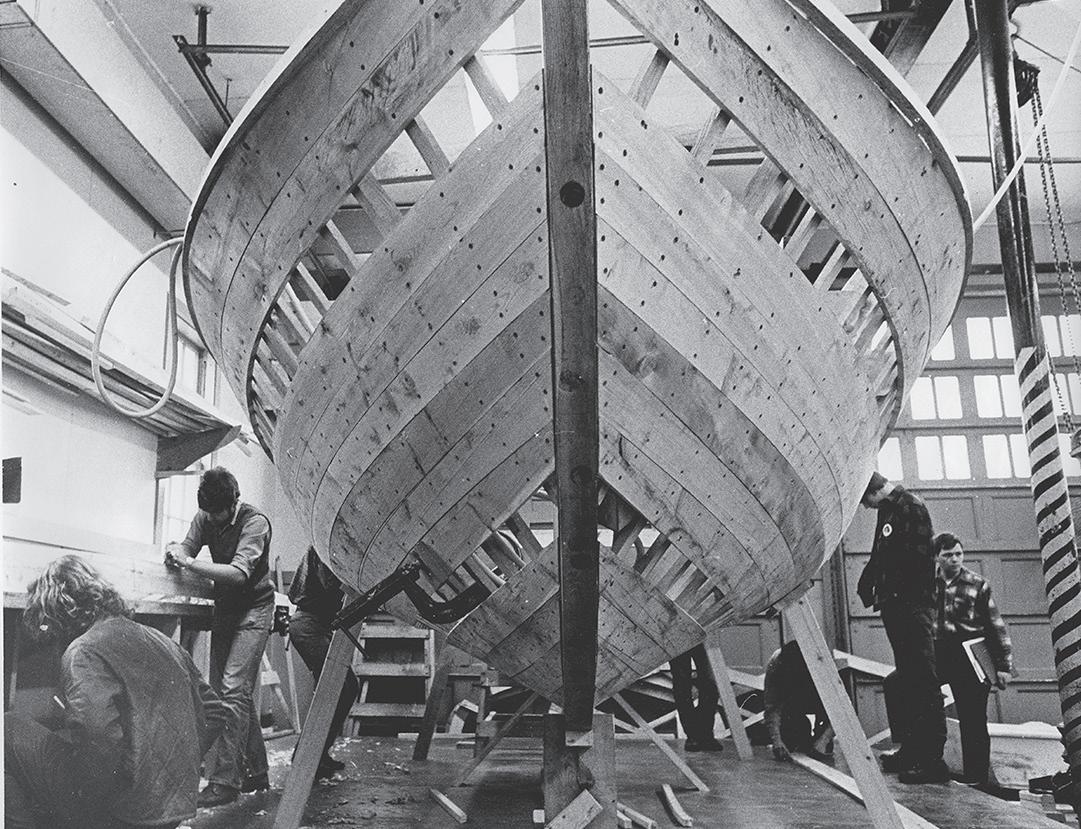
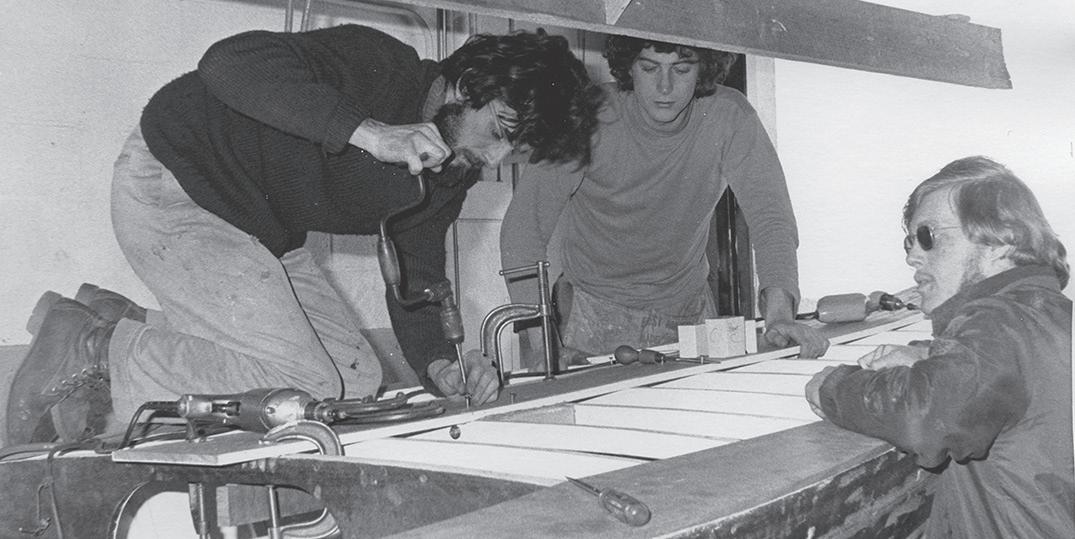
and a $120,000 grant from the Maine Department of Environmental Protection, both of which enabled the replacement of the main building’s roof and asbestos removal, work that began in late spring.
Next will come infrastructure updates, followed by the acquisition of equipment, fixtures, and furnishings. It’s admittedly a long road ahead, but it’s difficult to doubt the sincerity of the school’s supporters.
While the school’s original draw was wooden boatbuilding, “We have to expand it,” Pike says. Along with incorporating traditional components, the new curriculum would focus on developing its composite education and composite design and construction offerings, tying into everything from aircraft to automobiles.
“It’s all about transportation,” Pike says of the field. “It’s all about moving people and products.” Other new components could be marine upholstery and welding, both of which have wide application.
Provided the Boat School meets its funding goal, enrollment expectations are straightforward enough. It could sustain itself with 50 students paying between $20,000 and $30,000 a year, Pike said. During its peak, the school hosted 100 students. If it were to reopen, it would be the third postsecondary school currently operating in Washington County.
“The Boat School is Eastport,” Pike said, looking out at Passamaquoddy Bay from a table at Horn Run Brewing. “Anybody that sits here and thinks we shouldn’t have it—I scratch my head.”


Maine seafood is a ‘green’ choice
Innovative energy applications cut emissions
BY SAM FELDMAN
Your favorite seafood dinner may be better for the planet than you think. Sitting down to a bowl of Maine-farmed mussels likely means consuming only one-fourth of the carbon footprint you’d get from the same amount of protein in tofu.
We know this from a suite of greenhouse gas (GHG) assessments that Island Institute commissioned between 2022 and 2024, which focused on seafood businesses that produce lobster, kelp, mussels, and oysters. This is a first for seafood in Maine.
By looking at multiple businesses across Maine’s seafood sector, we can compare learning from business to business, highlighting opportunities for improvement at both the business and systems scale.
For example, vessel fuel use dominates emissions across many seafood operations, accounting for a staggering 60 percent of emissions in Luke’s Lobster’s supply chain. The pattern holds across shellfish aquaculture, ranging from 19% to 59% across the four oyster farms that were assessed and representing 27% of total emissions at Bangs Island Mussels.
These opportunities for improvement come at a time when Maine’s seafood sector has been beset by climate change impacts, ranging from rises in ocean temperature and acidification, which kills off oyster spat, to increased storm surges washing critical infrastructure into the sea.
Make no mistake—our access to healthy seafood from fishermen and aquaculturists is under threat, along with the thousands of jobs and iconic heritage that bring it to your table. But there are available solutions that can both reduce the seafood sector’s GHG emissions and assist businesses on the financial side.
One elegant solution has already been piloted by Luke’s Lobster. After receiving the results of their GHG assessment, Luke’s installed gel packs in its industrial freezer; they function like the cooler ice packs you bring with you on your trip to the beach.
Using them allows Luke’s to avoid using electricity during peak hours, which reduces its electricity bill, leads to fewer GHG emissions, and lowers the overall strain on the electrical grid. Innovations like these utilize technologies that have been commonplace in
REGISTER TODAY! bigelow.org/cafesci
Wednesdays at 5 p.m. | July 16 – August 6
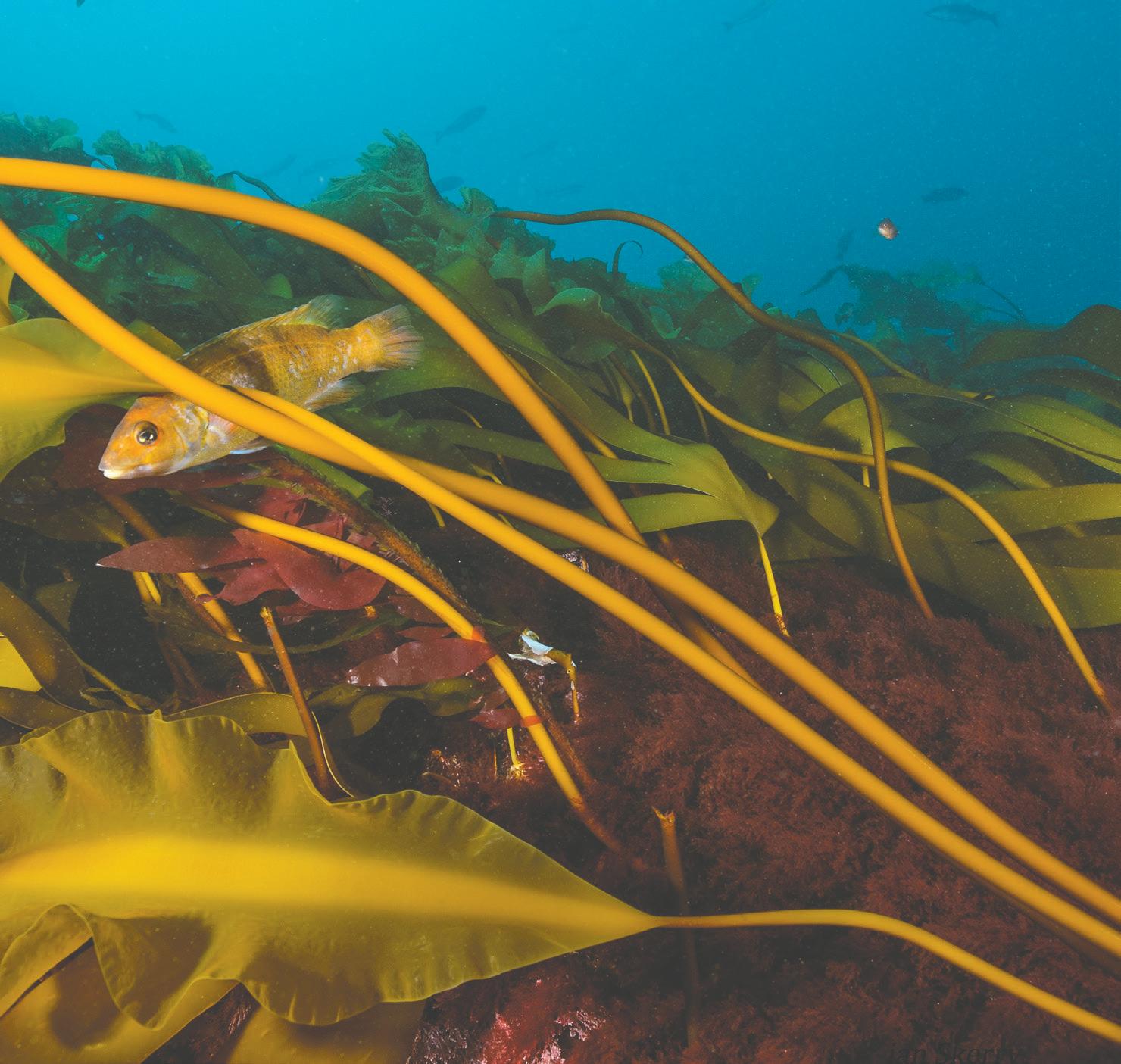
other industries for some time. More direct innovation has often been considered something that will come in the future.
Maine’s marine businesses aren’t waiting for the future; they’re building it now. Hylan and Brown Boatbuilders in Brooklin recently swapped its gaspowered engine for an electric outboard, using Island Institute grant funds to also install an off-grid solar array. As a result, its work skiff charges directly at the dock, using nothing by solar power.
On the New Meadows River, Bombazine Oyster Company has also leveraged Island Institute’s financial support to upgrade its floating solar array on the farm. With increased solar capacity and energy storage, the business now powers all its on-thewater processing equipment with solar energy and has enough left over to help charge the electric outboard it’s planning to add. These innovations build on earlier pioneers like Mere Point Oyster Copany, which has been running a solar powered oyster tumbler on their farm for years.
These innovations represent more than isolated success stories—they’re proof that Maine’s seafood industry can
LIFE SEA
© Brian Skerry
Bigelow Laboratory’s Café Sci is a fun, free way for you to engage with ocean researchers on critical issues and groundbreaking science.
This year’s Café Sci will be held in our brand-new center for ocean education and innovation. Come see this beautiful new space!
lead the nation in sustainable marine business practices. From Brooklin to the New Meadows River and beyond, these forward-thinking companies are showing us how marine businesses can thrive while protecting the environment they depend on. Their pioneering efforts demonstrate that the transition to clean energy isn’t just possible for marine businesses; it’s practical and already happening.
To bring stories like these to Maine’s coast, Island Institute will host public screenings of our new film, Climate of Change 7: Aquaculture for People and Planet, with panel discussions featuring our staff and Maine seafood industry members. These events showcase both the sustainability of Maine’s farmed seafood and our ongoing work to catalog emissions and drive innovative decarbonization efforts across the state’s seafood sector.
Sam Feldman is a community development officer with Island Institute, publisher of The Working Waterfront, focusing on helping sea farms transition away from fossil fuels. He may be contacted at sfeldman@ islandinstitute.org.
A new bank built for New England’s farms & fisheries.
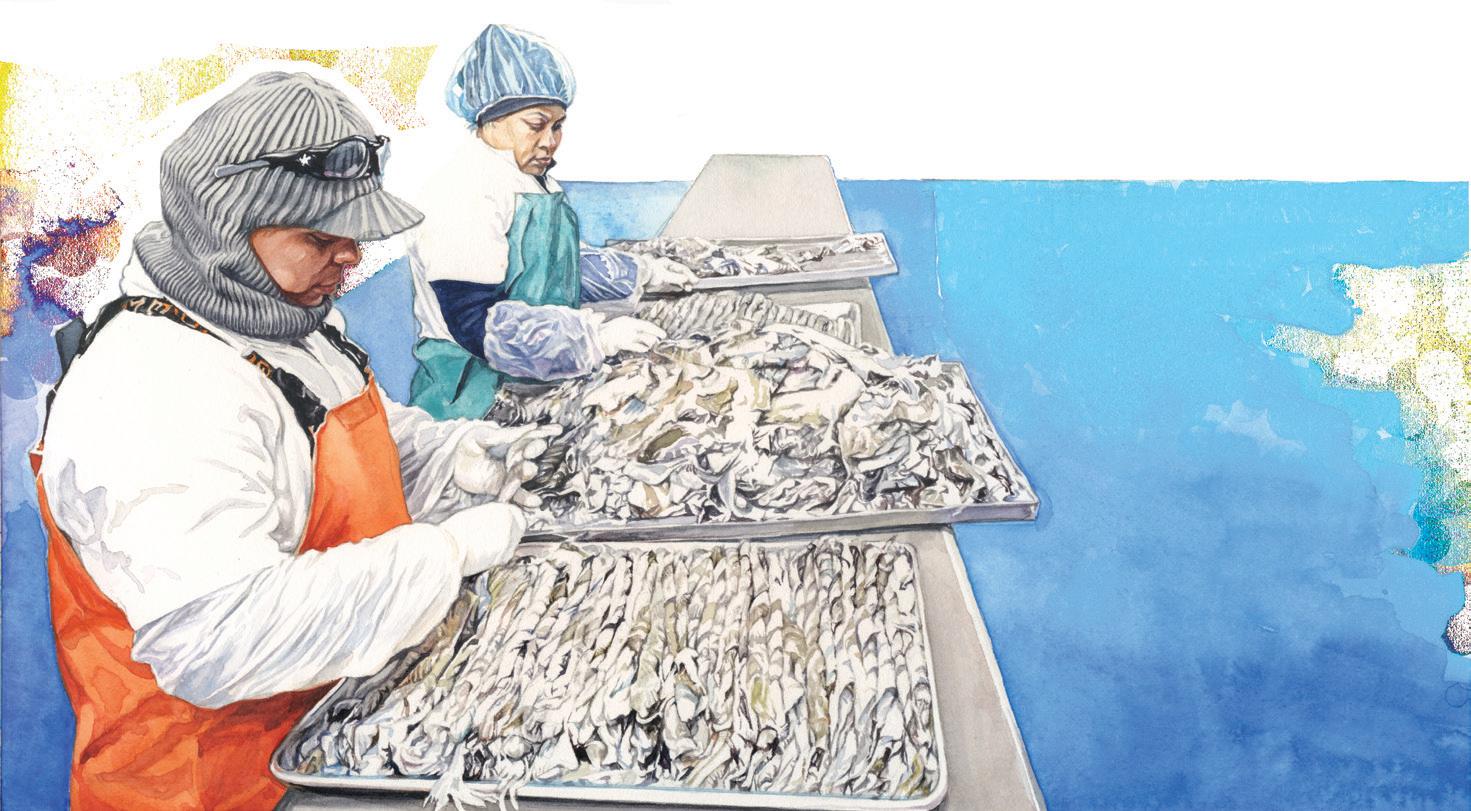

“It’s a breath of fresh air to find a financial institution that’s aligned with our values.”
DIRECTOR OF OPERATIONS NORTHEAST NON-PROFIT


Maine’s fractal coast
Measuring the coast involves some abstractions
BY DANA WILDE
Day in and day out, summer after summer when I was a kid, I flew back and forth over Casco Bay with my father in his Piper Cub seaplane. From the air I saw thousands of spooked seagulls, smooth, steel-colored sea rollers in identical ranks, wind-beaten chop, whales, porpoises, schools of mackerel churning the surface, a shark so big it looked like a driveway with fins, the salt-scoured lighthouse at Halfway Rock, dark schools of herring snugged up into island coves in the evening.
There also was the mysterious fact that most of the islands and rocks were elongated in the same direction, roughly northeasterly. You could see it as we approached Bailey Island to land in Mackerel Cove, a tube of water between two spits of land about the same size and shape as the cove. Out of the plane and scrambling around on low-tide ledges, you could see grooves and ridges in the rock running in the same direction. On a map of Casco Bay, the whole coast looked like grooves and oblongs all running the same parallel direction.
That grooving, at the small scale and the big scale, happened when around 14,000 years ago the glacier was inching back toward the Arctic, scratching ruts and gouging inlets and coves with something like icy claws.
How long is this coved and inletted ancient coast? To measure it, would you run your imaginary tape straight from Kittery to Lubec and let it go at that? Or would you measure into the bays, too? The detours into Casco, Penobscot, Blue Hill, Frenchman, Machias, and Cobscook bays would add uncountable miles—should you measure all the coves? And all their nooks and corners?
It turns out there is literally no end to Maine’s jagged contour. Better mathematical minds than mine were considering this problem of measuring crooked distances before I noticed it at the age of about 12, and one of them, Benoit Mandelbrot, noticed that natural objects such as coastlines do not conform to geometry based on straight lines.
In other words, the lines, planes, and cubes you learn about in high school geometry are ideal forms that do not actually exist in nature. So how do you measure the irregular thing itself?
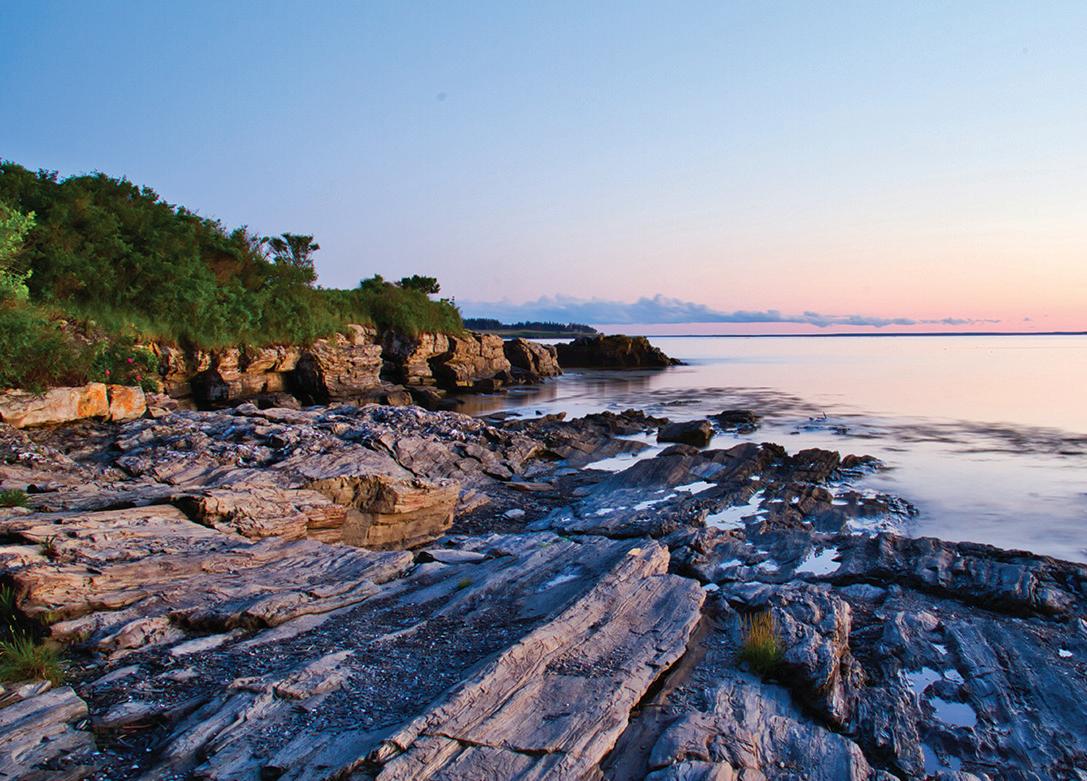
Turning out to be a person who notices similarities rather than a person who notices numbers, I don’t understand how Mandelbrot’s methods help figure coastal lengths. But I can explain the general idea.
Since a line in nature is not exactly a line, and a plane not a plane,
Mandelbrot figured out how to assign a number to the way a line (of a jagged coast, for example) leaks out of its straightness to some extent into a plane. It’s not exactly a plane, but not exactly a line either.
If a line is one-dimensional, represented by 1, and a plane is two-dimensional,
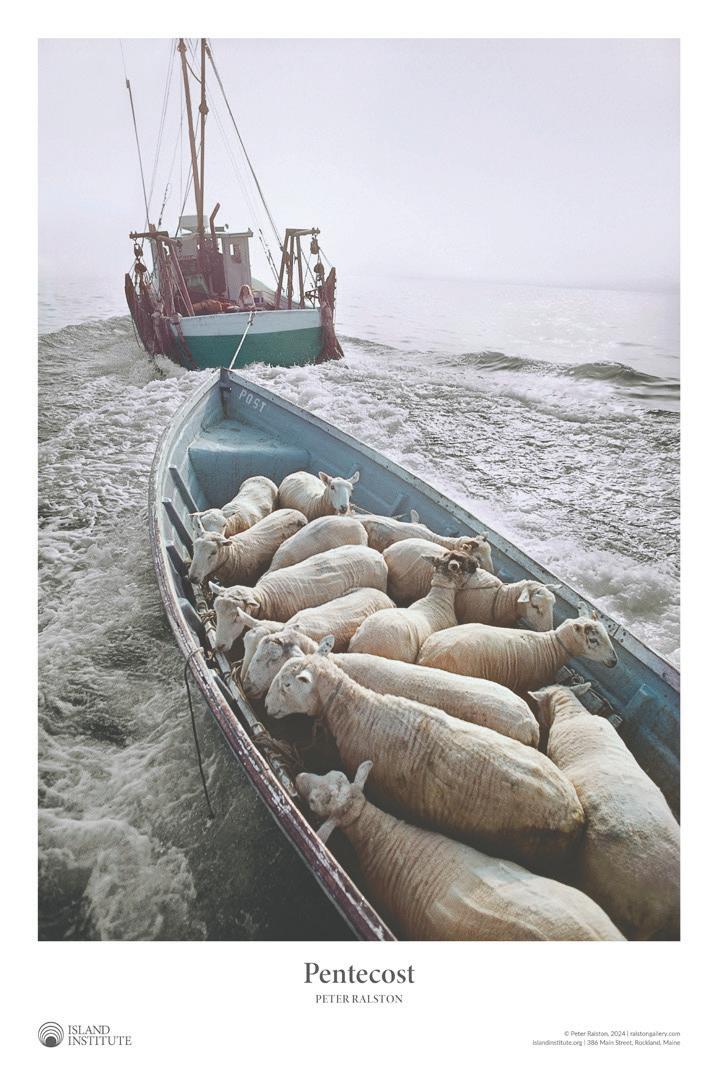


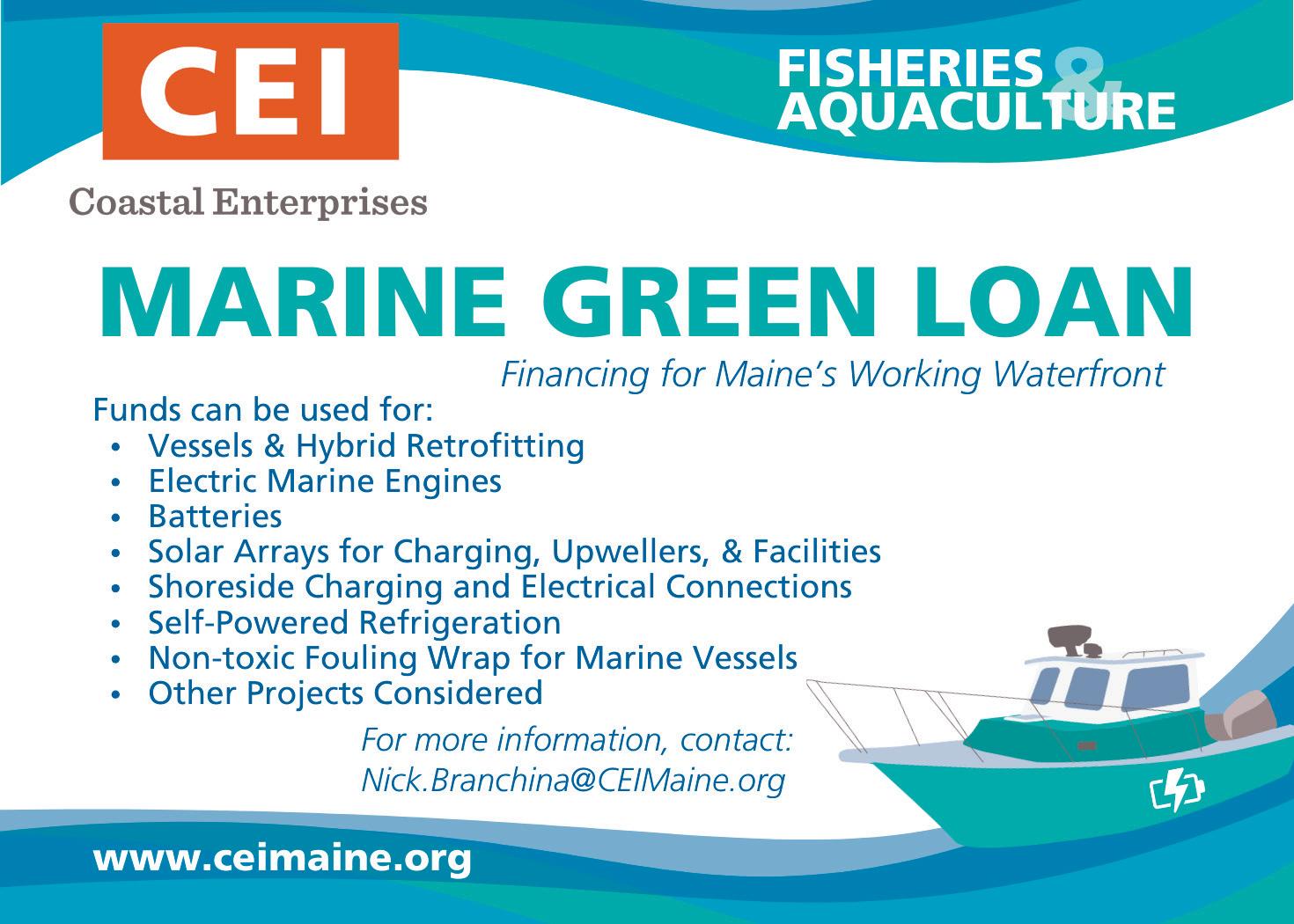
represented by 2, then the line of Maine’s coast is in between 1- and 2-dimensional. In other words, it is “fractal.”
A study published in the Journal of Coastal Research in 2006 calculated the fractal dimensions of four areas of Maine’s coast. The southwest coast which has a lot of beaches that are more or less straight has a mean fractal dimension of 1.11—a slight bend off a straight line. The south coast which includes Casco Bay is 1.35. (Another analysis showed the fractal dimension of Boothbay, where my mother’s family arrived in the 18th century, is 1.27.)
The north coast around Mount Desert Island is 1.23. The northeast coast from Machias into Cobscook Bay is 1.26; Cobscook Bay itself has a uniquely irregular coast-scape and comes in at 1.37. The overall fractal dimension of Maine’s coast looks to be a bit upwards of 1.2.
Now another thing Mandelbrot noticed about fractal dimensions is that as you look more closely at a line in nature, its shape at large scales tends to be similar to its shape at smaller scales.
In other words, along the coast around Casco Bay, the coves are similar to the grooves in the ledges, as I noticed when I was a kid. They are “self-similar,” which is to say they are fractals of each other. These similar shapes go on indefinitely downward, with the bays shaped like their coves, the coves shaped like their ledges, the ledges shaped like their grooves, the
grooves shaped like their ruts, the ruts shaped like their scratches.
This apparently is true not only of coastlines, but also of the outline of a snowflake, a mountain range, a mathematically generated pattern. The shape of the small part of an object is basically the same as the overall shape of the object.
This goes on infinitely downward as far as there are corners to be turned. And presumably, infinitely upward. A planet-moons system is similar to a star-planets system, and star-planets systems similar to galaxies.
Nature appears to be fractal through and through, mirroring itself at every turn and nook.
A child is a fractal of an adult. My son has the same contours I did at his age. And apparently he thinks thoughts like me. When he was 6, he shone a flashlight on a sheet of shiny metal, and the light splayed into a strangely deeplooking conical shape. “Look, Dad,” he said. “It’s a small future.”
The child is father to the man in thought as well as body, it seems, and no doubt in whatever other form we eventually take. Infinitely upward, it is to be hoped.
Dana Wilde is a former college professor and newspaper editor who lives in Troy. He writes the Off-Radar and Backyard Naturalist columns for the Central Maine newspapers. He may be contacted at DWildebdn@gmail.com.
FULL INVENTORY READY FOR YOUR WATERFRONT PROJECTS!
• Marine grade UC4B and 2.5CCA SYP PT lumber & timbers up to 32’
• ACE Roto-Mold float drums. 75+ sizes, Cap. to 4,631 lbs.
• Heavy duty HDG and SS pier and float hardware/fasteners
• WearDeck composite decking
• Fendering, pilings, pile caps, ladders and custom accessories
• Welded marine aluminum gangways to 80’
• Float construction, DIY plans and kits
Delivery or Pick Up Available!

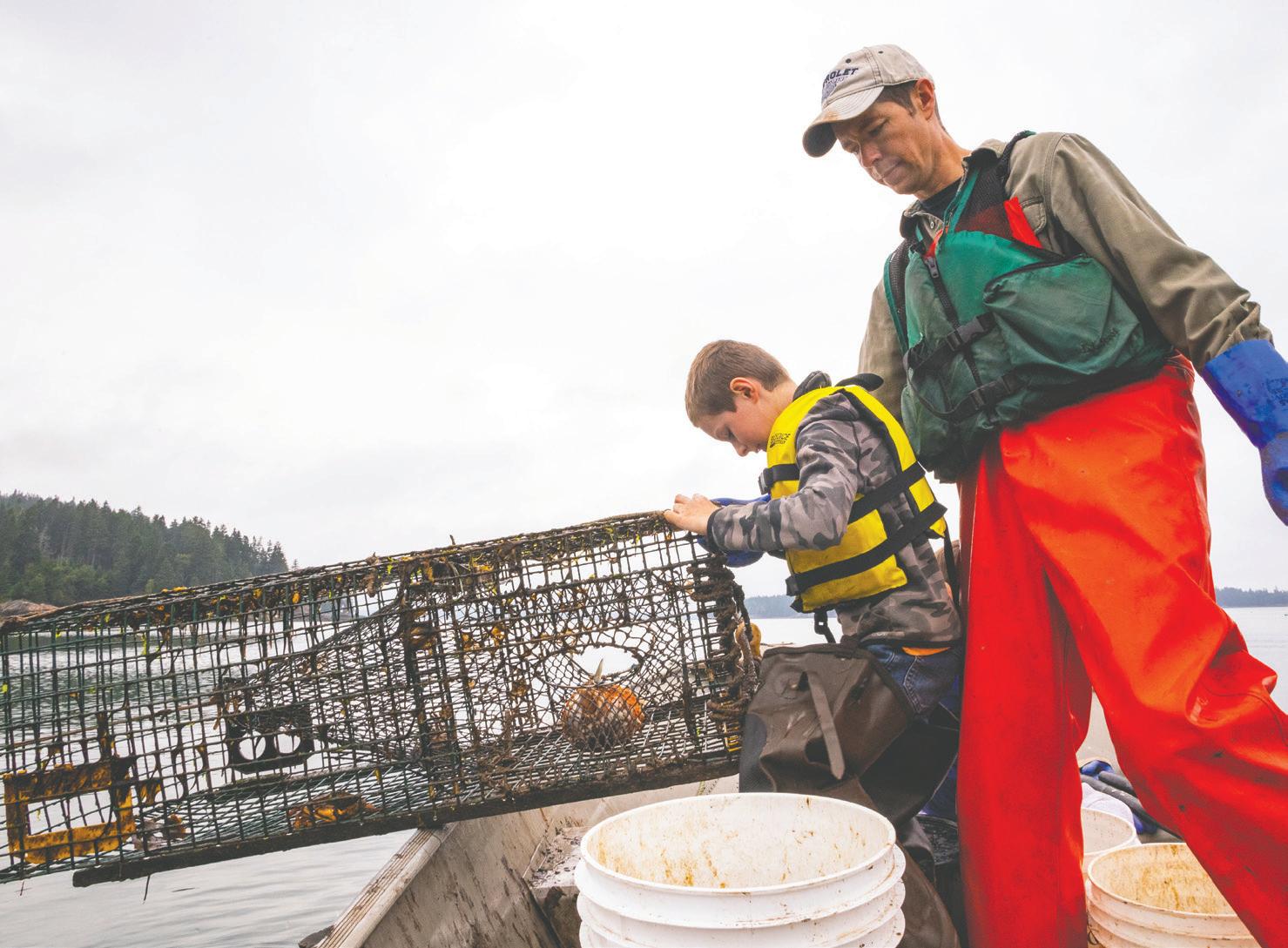


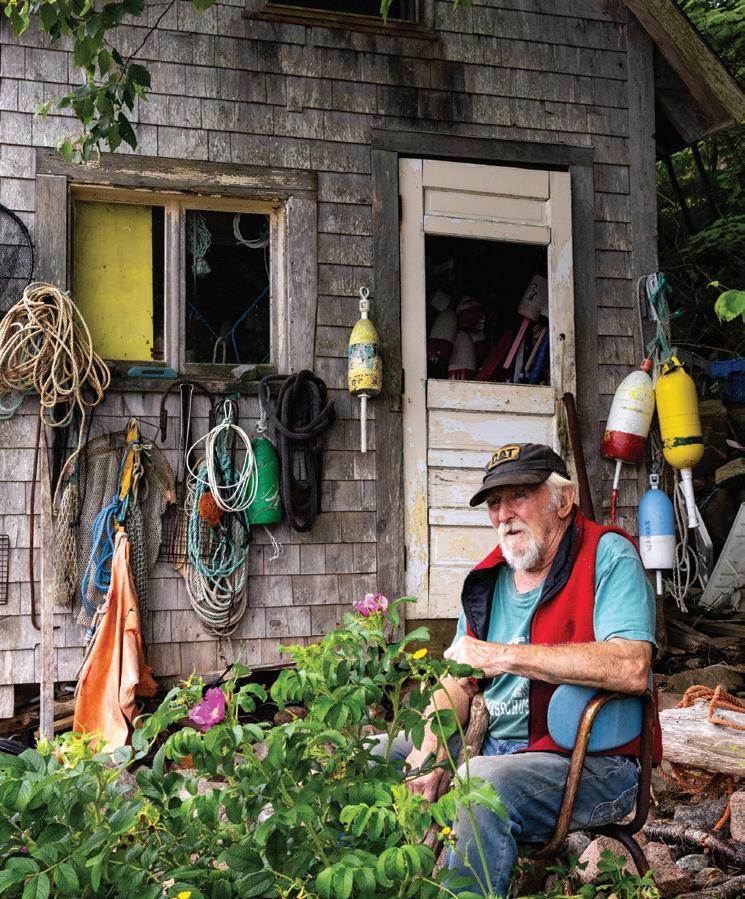

Rising ‘Tides’ in Eastport
Nonprofit gathers, preserves region’s culture
Since its founding in 2002, the Tides Institute & Museum of Art has worked to establish itself as a significant cultural institution for the eastern coast of Maine with connections to neighboring Canada and inclusive of the Passamaquoddy. Acting as part cultural anchor, part cultural catalyst, TIMA’s efforts include rebuilding the region’s cultural legacy, fostering new cultural works and initiatives, and preserving and repurposing historic buildings.
Artsipelego is an initiative TIMA began with others in 2012 that includes an annual cultural guide and map of the U.S/Canada Passamaquoddy Bay region and regular postings on the region’s cultural events and activities.
TIMA’s StudioWorks Artist-in-Residence program is in its 12th year of operation. For nine months, artists come from across the U.S. and abroad to work out of TIMA’s downtown studio building in Eastport. Some 119 artists from 28 different states and nine foreign countries have participated in the program.
TIMA now has nine historic buildings, including three in downtown Eastport, which it is restoring and repurposing. Its current largest building project involves the 1887 Masonic Hall which will become its primary museum.

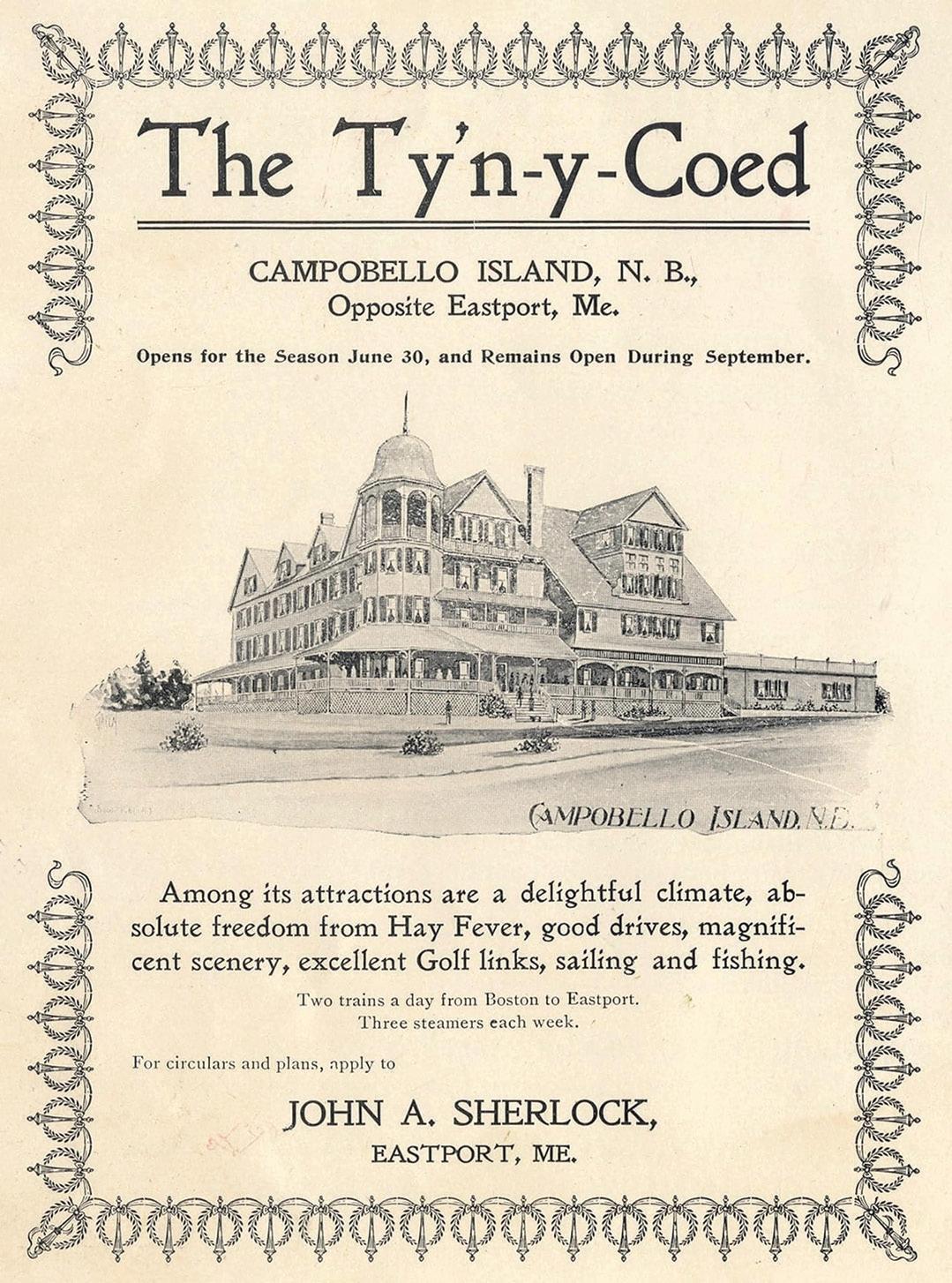
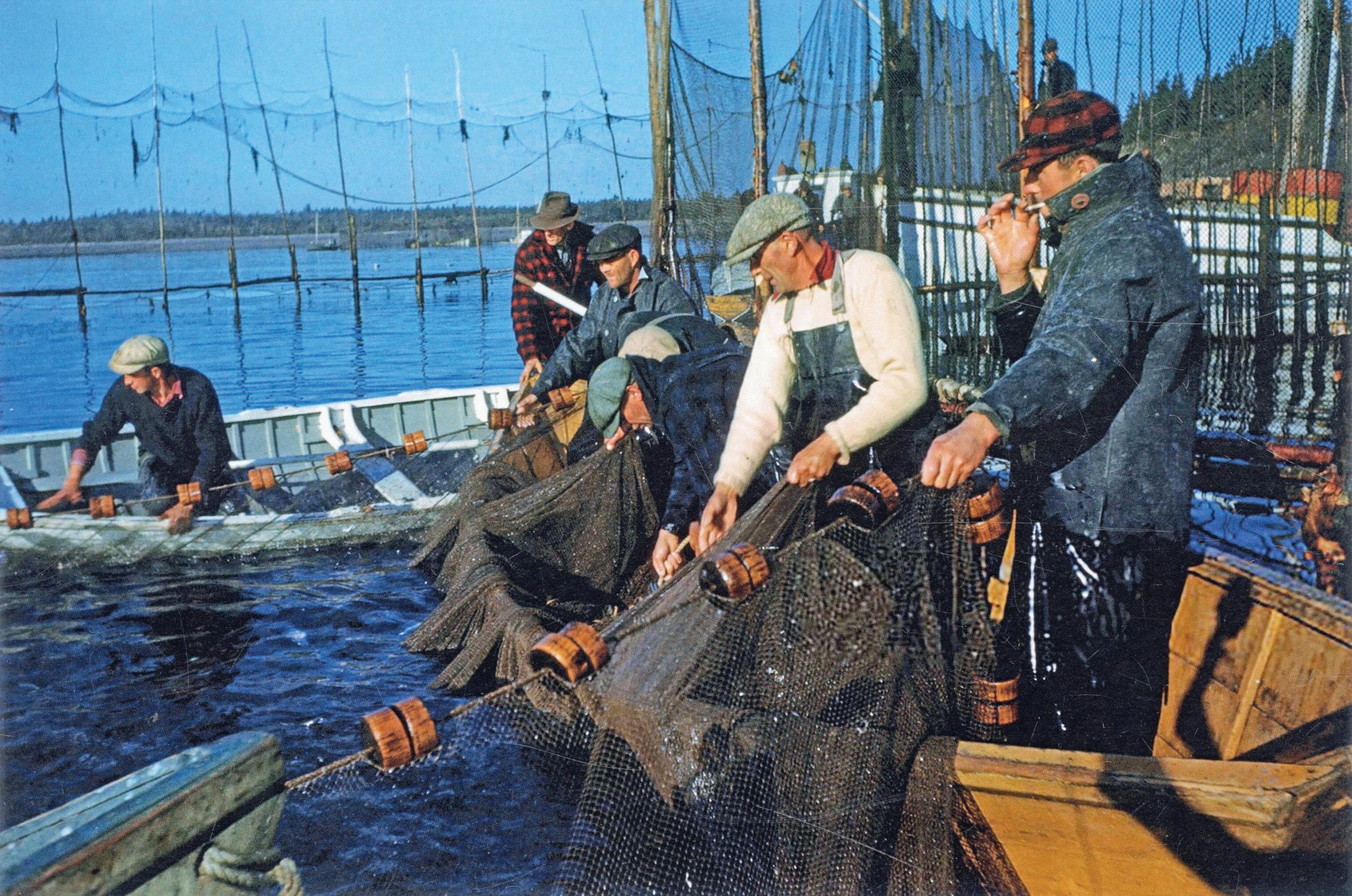




Our Island Communities

Matinicus: A Lighthouse Play performed on islands
Great Cranberry, Isle au Haut, Matinicus treated to free showings
After a successful three-week run at the Bangor Opera House, the Penobscot Theatre Company has partnered with Maine Seacoast Mission to stage Matinicus: A Lighthouse Play on three of Maine’s remote, unbridged islands in July.
The theatre company will travel aboard the Misson’s 74-foot Sunbeam to the islands during a trip from July 21 to July 24. Performances will occur on Great Cranberry Isle on July 21, Isle au Haut on July 22, and Matinicus on July 23. This tour is supported by a grant from the Margaret E. Burnham Foundation and individual donors.
Written by Jenny Connell Davis, Matinicus tells the true story of the distinctive, Maine historic figure Abbie Burgess who as a young woman single-handedly manned a lighthouse on Matinicus Rock in 1856.
Abigail moved with her family to the isolated island on the outskirts of the Penobscot Bay to tend the light. Told from Abigail’s perspective, this onewoman play navigates us through that first harrowing year when ultimately her father needs to head out for supplies, leaving her to care for her family and tend the lighthouse just as a fierce Nor’easter barrels ashore.
Using intelligence, bravery, and sheer force of will, Abigail manages to save her family while keeping the lights burning and the passing ships safe.
Her story and impact on the small, 2- by 6-mile island is especially significant to residents of all Maine’s remote, unbridged islands, and is a testament to the grit and resilience of those who choose to live there.
Mission staff provide health, educational, and community building services to residents of all 15 of Maine’s unbridged islands with a year-round population. As a part of that work, Sunbeam makes routine visits to some of these islands throughout the year.
“The significance of Abbie Burgess in the history of Maine island life is poignant and inspiring,” said John Zavodny, Mission president. “The Mission is honored to bring our community partner Penobscot Theatre Company’s stage production of the play to its namesake island.”
During the original showing of the play, the Mission was the theater company’s community nonprofit partner and shared information on both



Katie Peabody plays Abbie Burgess in Matinicus: A Lighthouse Play.
the Mission’s work on outer islands, as well as the history of Matinicus Island.
Also, after a matinee performance, the Mission’s Director of Island Services Douglas Cornman and Matinicus’ First Assessor Laurie Webber did a question and answer, “talk-back” session about what life is like on Maine’s most remote island.
Matinicus is directed by Julie Arnold Lisnet and stars Katie Peabody. Lisnet is an actor, director, producer, educator, and teacher at the University of Maine where she received a BA in theater and MA in acting. Peabody was born and raised in Seattle and
graduated from the University of Southern California School of Dramatic Arts.
Scenic design was done by Gwen Elise Higgins, costume design by Kevin Jacob Koski, lighting design by JP Sedlock, props design by Thomas Demers, and sound design was done by Neil E. Graham.
On writing the play Davis said:
“I will say that this is about living in a place that is fiercely beautiful, but where the weather isn’t always our friend. And about those moments in life when forces much larger than us rise up to remind us both how small we are, and how strong we are.”
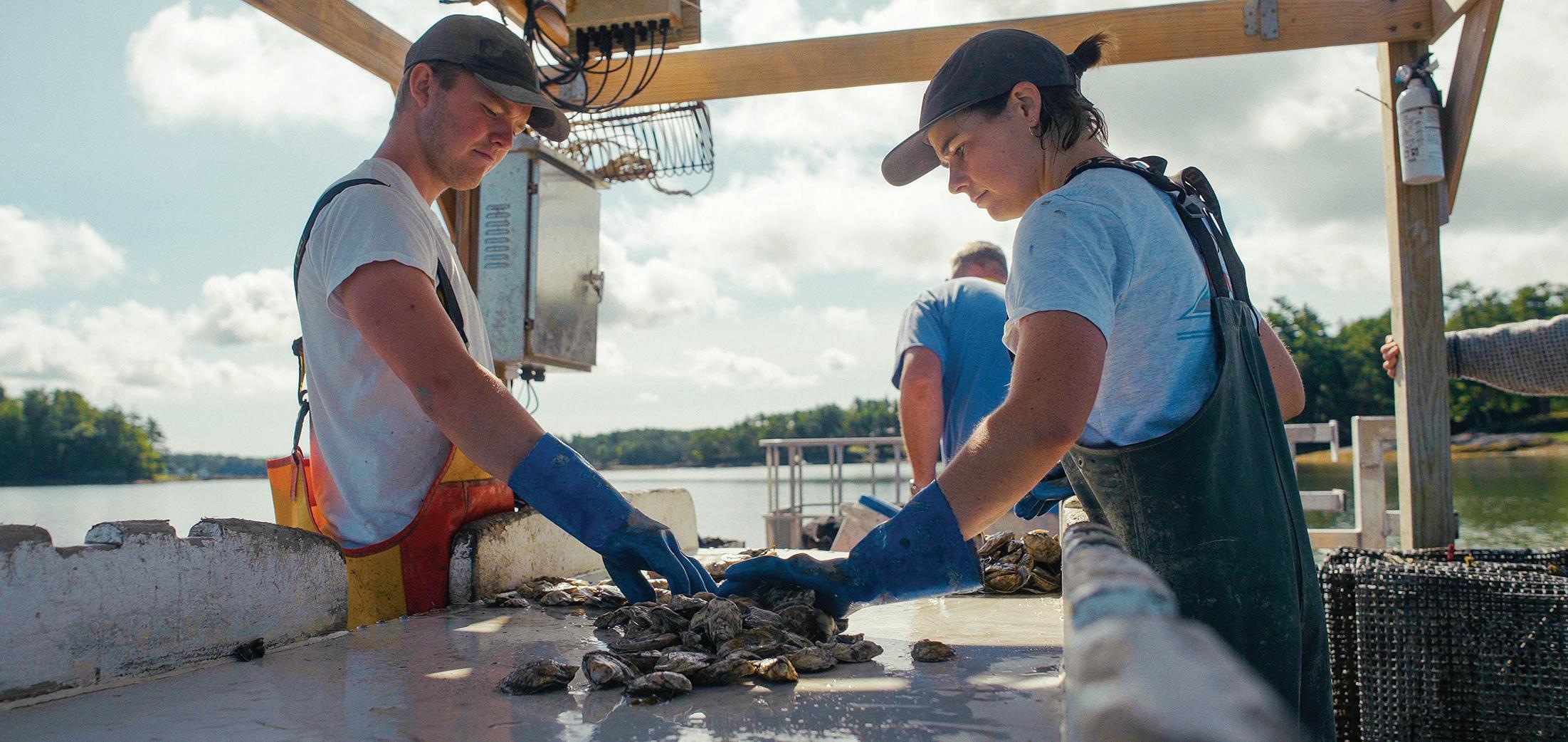
Aquaculture apprenticeships grow workforce
Aquaculture association celebrates program with documentary
BY JACK SULLIVAN
Kelly Morgan moved from California to Maine to work on an oyster farm. By way of the Maine Aquaculture Apprenticeship Program, she landed a job on the New Meadows River in Brunswick farming oysters with Bombazine Oyster Company.
Nearing the end of her apprenticeship, she’s already asking her mentors, “How do I grow in this industry?”
The program pairs applicants with aquaculture farms—primarily oyster and mussel farms—along the Maine coast for a hands-on learning experience that helps participants, farms, and Maine’s coastal economy. A collaboration of the Maine Aquaculture Association, Gulf of Maine Research Institute, and Southern Maine Community College, with investment from various Maine nonprofits, the program fills a critical shortfall in skilled, qualified, and dependable workers.
“That gap that we see on farms is in middle management,” says Christian Brayden, project manager at Maine Aquaculture Association. “On small Maine farms, you have the owner, and you have farm hands, but often they lack crew chiefs and farm managers, people with experience and knowledge to run a farm. Our apprentices are moving quickly from farm hands to middle management.”
Brayden has been a driving force for the program since its inception in 2018. The program operates on a $130,000 annual budget, funded by the USDA National Institute for Food and Agriculture, FocusMaine, Jobs for the Future Foundation, and others.
The apprenticeship includes 2,000 hours of paid work on the farm and 144 hours of classroom time, which takes one to two years to complete. Farms must provide nine months of employment per year, which can be a hurdle for some of the more seasonal businesses.
The classroom portion is primarily designed and conducted by GMRI’s aquaculture program manager, Carissa Maurin. Maurin notes that even though there is a fair amount of coursework—including basic biology—the program does not require a college education. Applicants with marine science backgrounds are valued, but the program also seeks applicants with skills including electrical and mechanical experience, carpentry, and plumbing.
Experience working on the water is an added advantage, but the program teaches basic skiff-operating skills and knot tying. One of the most popular parts of the hands-on coursework is the Yamaha motor maintenance and repair course.
The program even provides boots, bibs, and a life vest to apprentices, an expense that can top $500 and be a barrier to entry for some.
Michael Scannel, formerly a sternman on a lobster boat, spoke about his transition to aquaculture during a panel discussion at an MAA event on May 1 at O’Maine Studios in Portland.
“When I started off lobstering, I watched a lot of the changes going on in the industry,” he said. “I was looking for a way to diversify, and it seemed like aquaculture was a no-brainer, a way to provide another opportunity to be on the water and stay in Maine.”
Young lobstermen like Scannel are part of the target audience of MAA’s new educational documentary about the apprenticeship program. A teaser for the film was screened at the Maine Fishermen’s Forum earlier this year and the film premiered at the May 1 event.
Trixie Betz, outreach and development specialist at MAA, says interest and enthusiasm for the program has been growing substantially, and more farms and apprentices are applying. MAA produced the documentary film because it needed a way to explain the program, highlight the gritty nature of working on a year-round aquaculture farm, and demonstrate that a career in aquaculture is achievable and yields results.
Betz also hopes the film educates those outside the sector and helps demystify aquaculture in Maine.
“Farms are currently growing. They are applying for more acreage,” she says. “A lot of these farms that
started five to ten years ago are starting to turn a real profit. So along with this growth comes a need for a growth of workforce.”
Housing has been one obstacle to that growth. “A couple farms this year, had to drop out of the program,” Brayden says. “There are parts of the state that apprentices weren’t willing to move to. But the most common reason was that they weren’t able to find housing,” especially in the Mount Desert Island region.
Scannel, the former sternman, is completing his apprenticeship but is already a farm manager at Madeleine Point Oyster Farms in Yarmouth. Kelly Morgan, who is wrapping up her apprenticeship at Bombazine Oyster Company, is working directly with GMRI’s Carissa Maurin to chart her future in the industry. With a background in education and research, and now with hands-on experience working on the water, Morgan wants to apply what she’s learned to support the aquaculture industry. She may even want to start her own business. “A year ago,” she said with a laugh, “I’m not even sure I knew what an LLC was.”
Maine Aquaculture Association’s film Tending the Tides has upcoming showings including a July 24 screening in Portland as a part of the Maine Outdoor Film Festival. Learn more at maineaqua.org/tendingthe-tides.
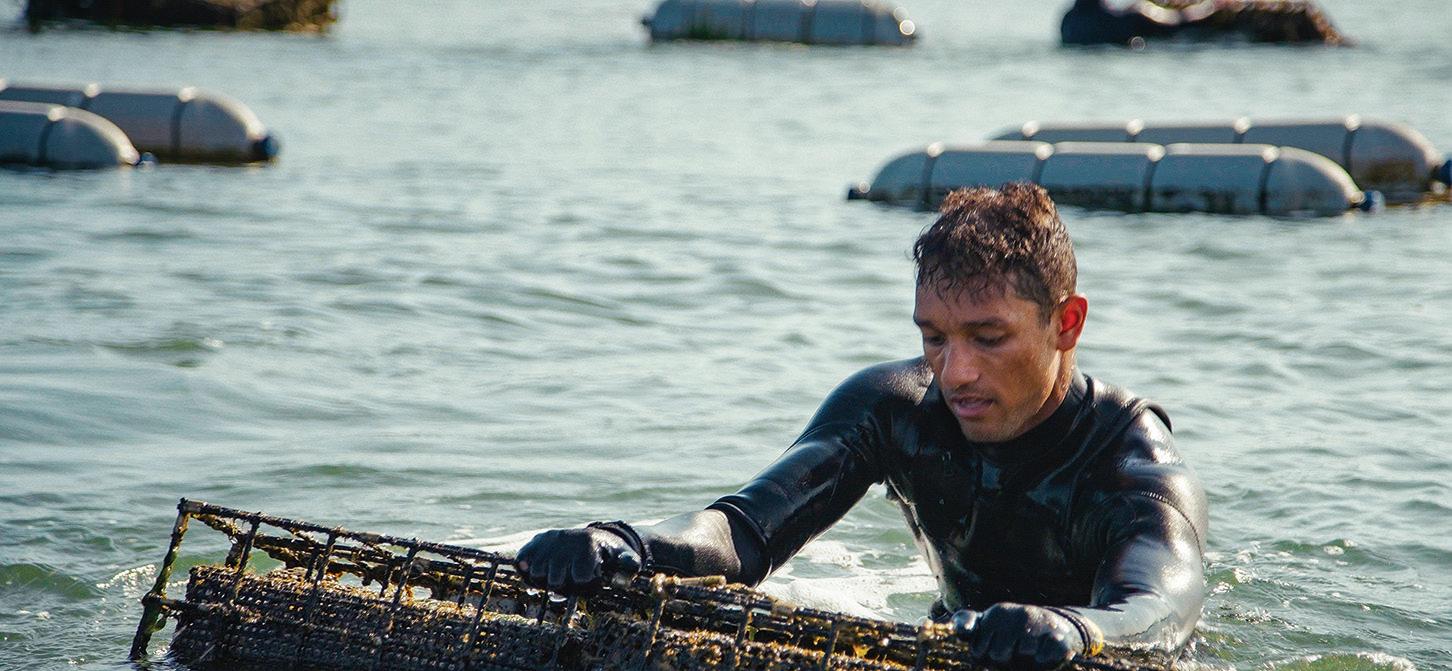

Trans-Atlantic art
Tradition continues in the Azores
HORTA, THE TOWN at the eastern end of Faial, one of the islands that make up the Azores in the North Atlantic, has long been a major destination or stopping point for trans-Atlantic sailors, including many from Maine.
It’s customary for visiting sailors to commemorate their voyages with paintings on the town’s big breakwaters. Today there are thousands of these paintings, stretching along what may be a mile of concrete and granite wall.
Thirty years ago, I was aboard a sloop from Belfast, Maine, that made the trip and left a painting, long-since weathered away or painted over. The custom—and the mandatory visit to Peter’s Café Sport on the waterfront—persist today. These photos were taken at Horta during a visit in mid-May with my wife, Janice Drinan. —David D. Platt

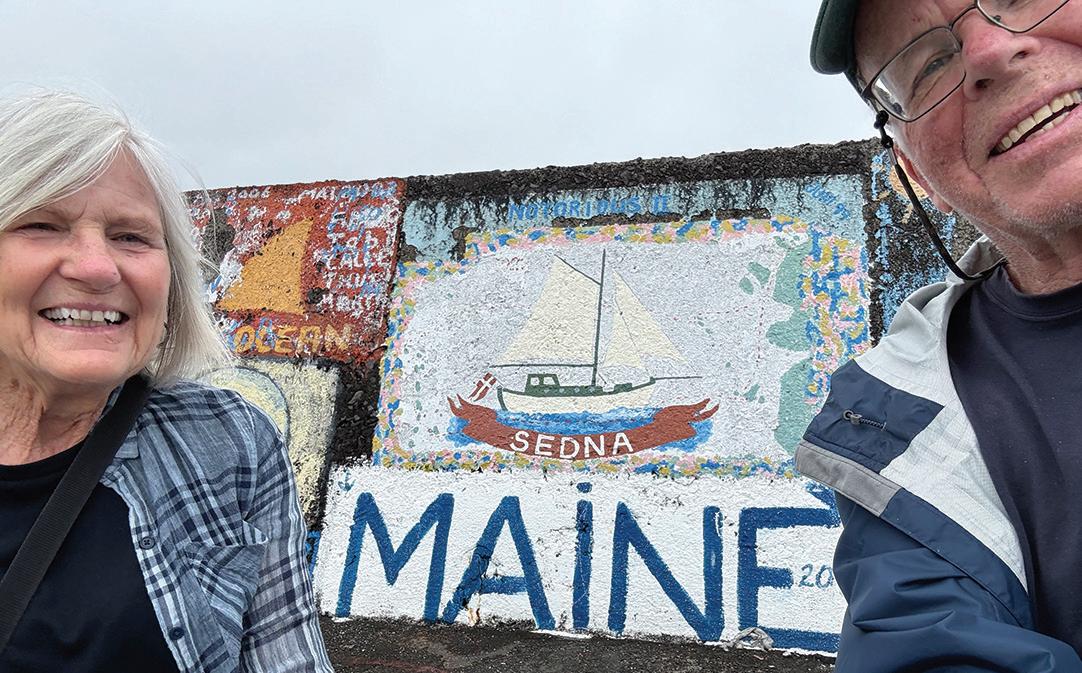


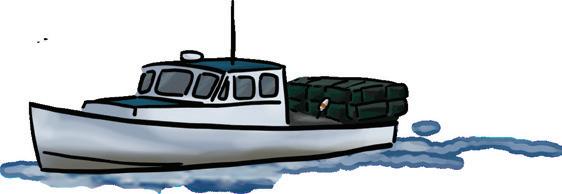

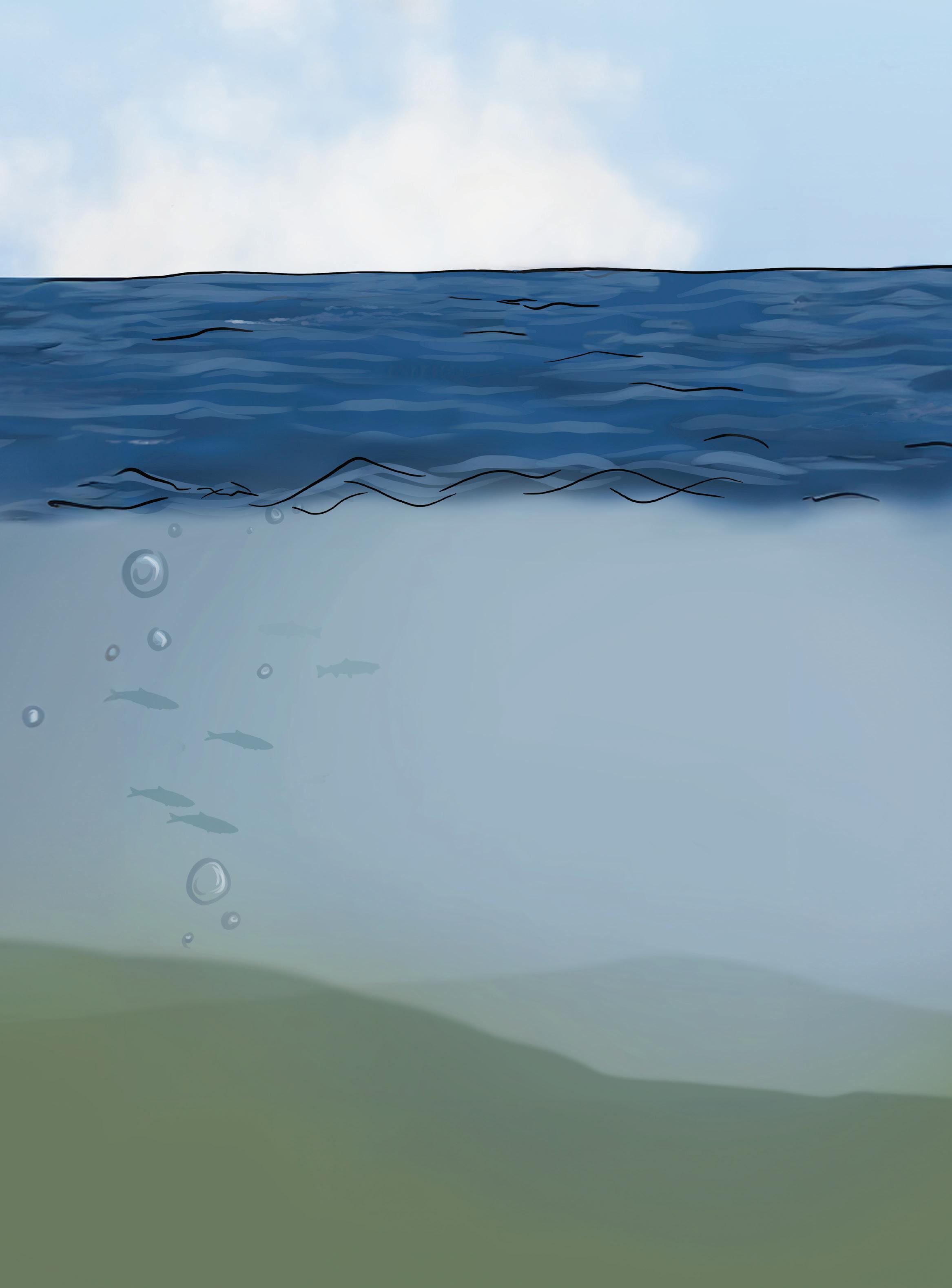

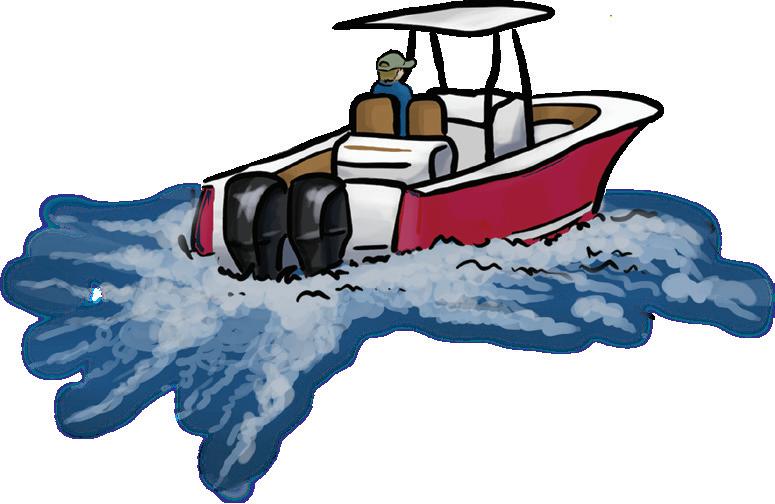

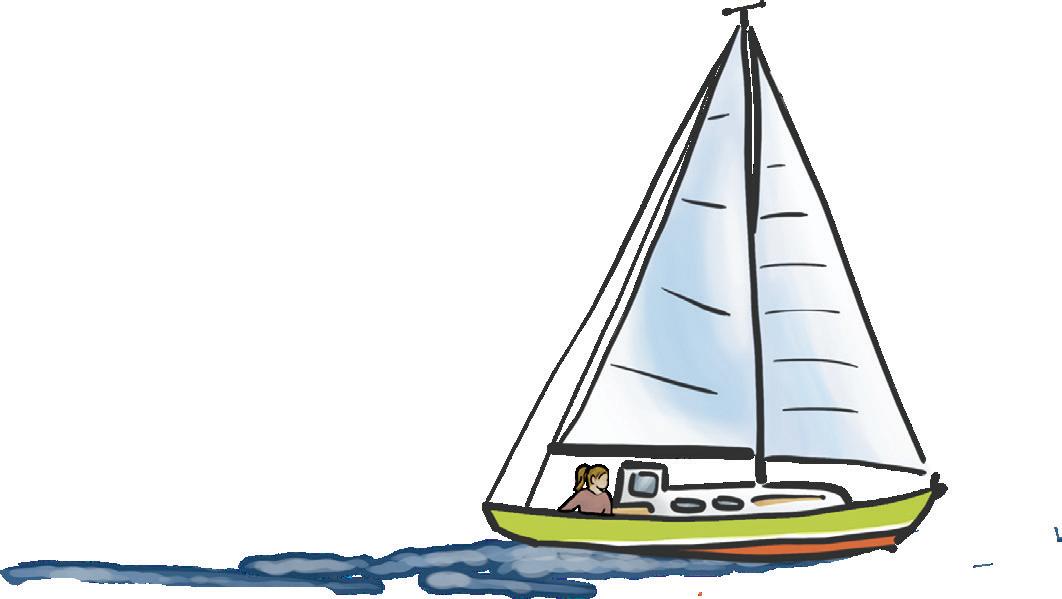






Maine Maritime Academy names president Craig
Johnson graduated MMA in 1991
Following a national search, the Maine Maritime Academy board of trustees selected Craig Johnson, an MMA graduate of the class of 1991, as its new president.
Johnson has served as the Academy’s chief operating officer since August 2022, and interim president since June 2024.
“Following a thorough search, we have selected Craig Johnson to lead Maine Maritime Academy,” said MMA board chair Wayne Norton (Class of 1986). “Craig has demonstrated stalwart leadership across the budgetary and strategic fronts, making solid inroads for the Academy throughout the maritime sector. He is well respected by faculty, staff, and students alike. Craig has a steady hand and the vision to position MMA for the pivotal moments ahead in the maritime industry.”
Johnson said he was honored by the appointment.
“The maritime industry is on the precipice of incredible growth, and it has been a career highlight to serve MMA as we create a roadmap that will ensure the Academy’s strength and sustainability in a thriving industry for decades to come,” he said.
“As an alum whose life trajectory was altered by atending the Academy, I am deeply moved by the young men and women who chose a career in the maritime world. Together with the deeply passionate faculty and staff and alumni, it is a point of pride that
we are creating an environment that will lead them to future personal and professional successes.”
During Johnson’s tenure as chief operating officer and interim president, he initiated strategic partnerships for the Academy with Bath Iron Works and Portsmouth Naval Shipyard and was reappointed to the U.S. Department of Transportation’s Maritime Transportation System National Advisory Committee.
He also is overseeing the largest capital improvement projects in the school’s history with the expansion and renovation of its waterfront and updates to Curtis Hall, the state’s largest campus residential structure.
Johnson’s arrival at the Academy in 2022 followed three decades of maritime industry work for companies such SEACOR Holdings and XL North and was a founding partner in Flagship Management, an international maritime search and consulting firm. He held a USCG First Assistant Engineer and Third Assistant Engineer license.
MMA will receive a $300 million national security multi-mission vessel T/S State of Maine later this fall. The new training vessel, the third of its kind to be issued to a state maritime academy, is projected to revolutionize the training of mariners. The vessel is commissioned and owned by the US Department of Transportation’s Marine Division.
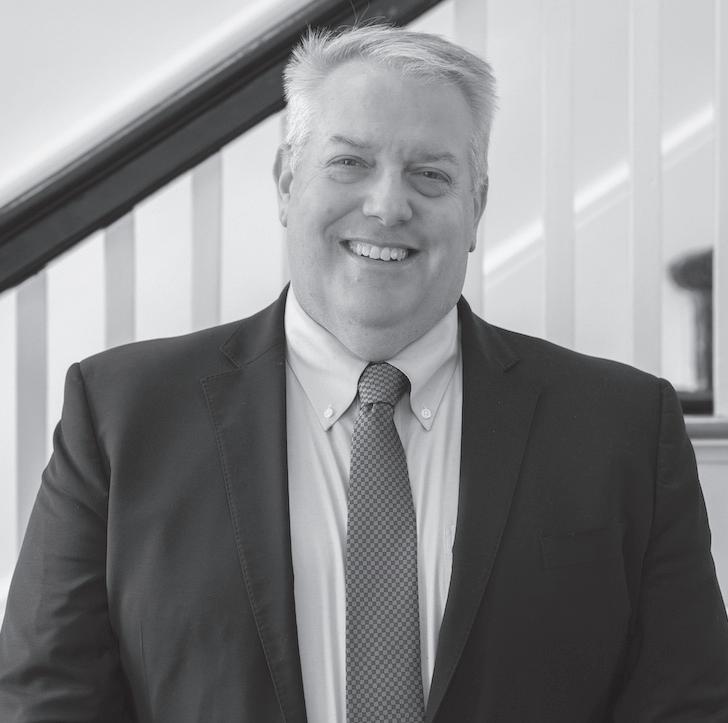
MMA is a co-educational, public college offering 22 academic programs in marine engineering, management, science, and transportation to promote U.S. maritime interests. The college is consistently recognized for providing a high-value education by organizations including the Brookings Institution, U.S. News and World Report, and Money Magazine.
Island Institute welcomes new leaders
Staff named to policy, operations, and philanthropy posts
Island Institute is pleased to announce three new leadership appointments across operations, policy, and philanthropy that will strengthen the organization’s ability to deliver its mission: to boldly navigate climate and economic change with island and coastal communities to expand opportunities and deliver solutions.
Peter Rand has been named chief operating officer after nearly seven years of leadership at Island Institute as chief financial officer. In his new role, Rand will lead the organization’s operational strategy and oversee implementation of systems and structures that support the strategic plan and long-term sustainability. Rand brings deep experience in both the public and private sectors. He began his career as a CPA with Baker Newman Noyes, working with healthcare, financial services, governmental, and nonprofit clients, and has since held executive financial leadership positions across multiple organizations. Additionally, he has provided board leadership to organizations serving individuals experiencing homelessness, hunger, and poverty, and internationally through play therapy to children in impoverished and war-torn countries.
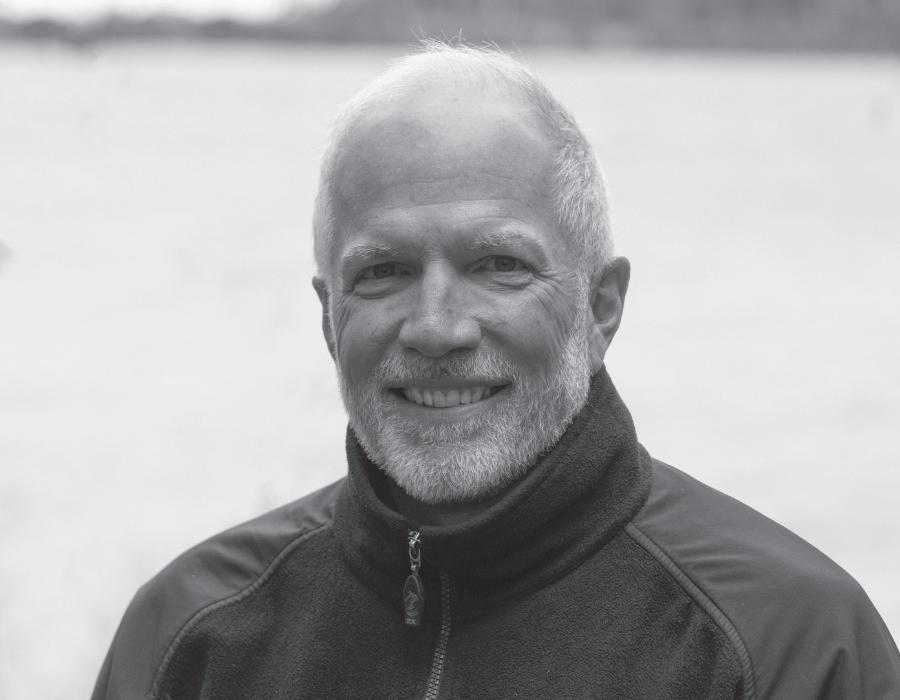
Rand holds degrees in business administration and accounting from the University of Maine and University of Southern Maine, as well as a master’s degree in policy, planning, and management from the Muskie School of Public Service at the University of Southern Maine. Rand and his wife Sophie, a high school social worker, raised their two children in South Portland. They now live in Jefferson.
Erin Quetell has joined Island Institute as public policy director. In this role, she partners with staff, communities, and external organizations to advance strategic initiatives and lead government relations and public policy campaigns that support the resilience of Maine’s island and coastal communities.
Quetell brings over a decade of experience in regional climate work, including clean energy transitions, electric vehicle infrastructure, comprehensive planning, and community development. She previously served as chief sustainability officer for Oakland County, Michigan and as environmental sustainability planner for Ferndale, Michigan.
Quetell earned a master’s of public administration in environmental science and policy from Columbia University and a Bachelor of Science in biology
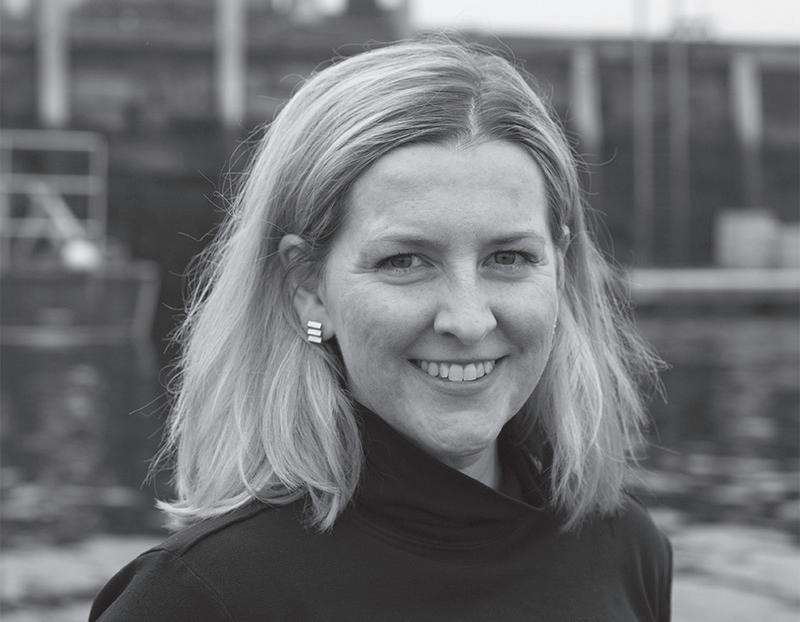
from Grand Valley State University. She relocated with her family from Michigan to Lincolnville.
Rosemary Price has joined the Institute as director of philanthropy. She leads the individual gifts team and is responsible for building meaningful connections between donors and the organization’s mission to advance climate and economic resilience with communities along Maine’s coast.
Price is a nonprofit fundraising leader with 20 years of experience spanning the arts, environment, and higher education sectors, successfully managing capital campaigns and programs for corporate sponsorship, individual giving, and planned giving. Her career reflects a long-standing commitment to mission-driven organizations.
She holds a master’s degree in museum studies from the SUNY Cooperstown graduate program and a bachelor’s degree in music performance and history from the University of North Carolina at Chapel Hill. She lives with her family on the Blue Hill Peninsula.
Island Institute is a 41-year-old nonprofit organization, based in Rockland. For more information, visit islandinstitute.org
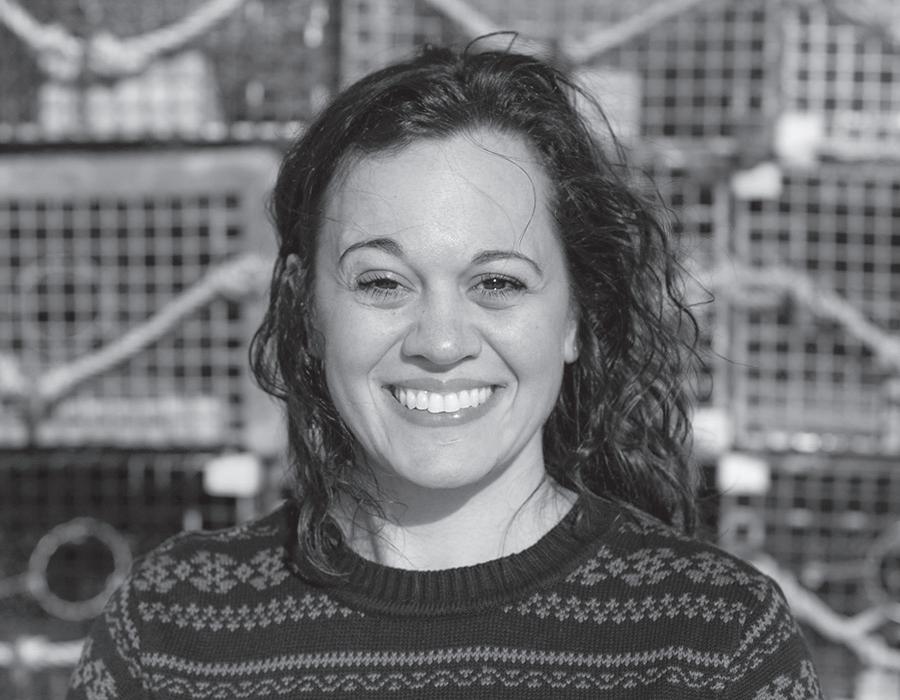
book reviews
An old salt spills the fish guts
An insider’s unvarnished tales of working waterfronts

Working Waterfront, A Fish Tale
By Bill Gerencer, Archway Publishing
REVIEW BY CLARKE CANFIELD
BILL GERENCER knows seafood.
As a former fisherman, he knows how to catch it. As a long-time seafood buyer, he knows how to purchase and process it. As a one-time board member on the New England Fishery Management Council, he knows how to manage it. And from the decades he’s been in the business, he knows how to cook up many fine seafood dishes.
Gerencer’s book, Working Waterfront, A Fish Tale, is a memoir of Gerencer’s career on boats and waterfronts, in processing plants and regulatory meetings, and at fish auctions across New England and beyond.
But Working Waterfront is more than simply a book about fish— whether catching, processing, buying, managing, or cooking them. It’s a fast-paced collection of stories about the colorful people and places that Gerencer came to know and experience from his first job on a lobster boat in Boothbay Harbor up until his retirement from Foley Fish.
Gerencer drops dozens of names in his stories and provides an insider’s view of the fish world that makes you feel as if you are there—on a boat at sea, on a wharf, in a back-room meeting, or perhaps in a rough-around-the-edges bar in a fishing port.
Gerencer’s time on waterfronts began with a summer job as a skinny sternman on a lobster boat after he earned a college degree in biochemistry.
“’Just for the summer’ turned into the winter, the following summer, and another five years of working on offshore trawling, including one of the New England ‘highliners’ fishing on Georges Bank out of Boston Harbor,” Gerencer writes in the foreword of his book.
After his time on the water ended, he spent another 35 years at fish auctions, fish and shellfish farms, fishery management meetings, processing plants, and other shoreside spots in New England, as well as a lot of restaurant kitchens across the country.
nature, the freedom to live outside the 9-to-5 world, and pay scales that more closely matched my effort and success,” Gerencer writes. “True, in my chosen world 12 hours is only a half-a-day (‘You lazy bastid’), but the long hours, hard work, and the exercise of a sharp mind needed to succeed here leaves you with a satisfaction found by folks who love what they do.”
Gerencer’s book has ten chapters, the first several of which roughly follow his career chronologically. There, you’ll learn about his time aboard the Lorna Laurie lobster boat in Boothbay Harbor and the Calvin L. Stinson groundfish trawler out of Rockland. Then comes stints on the highliner Old Colony out of Boston and on other boats in Maine before he comes on shore to become a fish buyer at the Portland Fish Exchange for Foley Fish.
You’ll learn about his time aboard the Lorna Laurie lobster boat in Boothbay Harbor and the Calvin L. Stinson groundfish trawler out of Rockland.
“I never had a concrete plan, preferring a life that offered a closer connection to
During his fishing years, Gerencer came to know the major fishing ports such as Point Judith, Boston, New Bedford, Gloucester, and Rockland, all of which “had their respective charms as tough towns,” he writes. But Portland, he concludes, was by far the
Pandemic memories haunt novel
Island escape provides little peace or protection

The Disinvited Guest
By Carol Goodman (HarperCollins, 2022)
REVIEW BY TINA COHEN
BY WEIRD happenstance,
Carol Goodman’s The Disinvited Guest landed on my desk the same week we observed the five-year anniversary of the COVID pandemic lockdown, when people warily questioned every interaction and object for possibly transmitting the virus, which we understood was extremely contagious.
For many of us, jobs and schooling went remote, and many left crowded urban areas to reside in seasonal homes or with family or friends offering more room to spread out. Emotional support often was a low priority, and paranoia and distrust came to dominate our normal, instinctual desire to share and problem-solve in communal ways.
Goodwin harkens back to that era, although in a non-specific way,
describing that time, but doesn’t name the pandemic. The story also takes place in an unspecified year; we are to understand it is some time in the future after that earlier pandemic, suggesting the world is forever changed and a progression of pandemics will occur.
In the framework of a mystery, Goodwin provides a skillful interpretation of a retreat gone bad, where paranoia feels justified, being under attack by an invisible force seems very real, and the helplessness and limitations imposed by the place and time feel like an enemy unto themselves.
Yet, paradoxically, what could be a better escape than an island off the coast of Maine? So when a group of friends, some who met during college, decide to escape there during this new viral outbreak, it sounds like a reasonable undertaking.
They have been circumspect in creating this group, paying attention to possible exposure to the virus, responsible attitudes, and skills that will be helpful. There are some subsets-— couples, a brother and sister (whose parents own the island), previous
roommates.The history of the place and the cast of characters both provide drama as we get to know them.
An earlier visitor’s journal found in the house describes the island having once been a site to quarantine immigrants who had exposure to or contracted typhus, coming by ship from places like Ireland in the mid19th century. A Dr. Harper kept the journal, which is discovered in the novel by Lucy, the book’s narrator. She, like her housemates, already has plenty to worry about.
“Fever Island,” as Goodwin has dubbed it, with its forbidding rock coast and regular fog, feels safe from any possible mainland hostility. (To be safe, they’d left their out-of-state vehicles on the mainland, parked in a building where no one could see them and suspect outsiders’ presence).
They had phones and internet (powered by a windmill), and a skiff. Supplies could be replenished; medical care could be obtained. Lucy had caught the virus in the previous pandemic, and the siblings had lost their parents to the illness. Everywhere is proof of the tenuousness of the life these drop-outs
toughest port back in the 1980s before it became spiffed up.
Most of his career was spent on shore, primarily as a seafood buyer at the Portland Fish Exchange for Foley Fish, and later as a salesman for Foley. Much of his book is devoted to his years on the Exchange and serving on the New England Fishery Management Council.
Throughout it all, Gerencer gives a behind-the-scenes look at the seafood trade, warts and all. He writes about the good people in the business, but also tells quite a few stories with a lot of salty language about the unsavory side of things: the black market, alcohol, guns, and the wheeling and dealing.
In so doing, the book gives the reader a vivid and detailed sense of place wherever it takes you.
As a bonus, he also provides recipes or cooking tips at the end of each chapter. Interested in fish cakes, panseared haddock over littlenecks, or fish chowder? Check out the end of chapters four, six, and nine.
The book is available for purchase at Amazon and at selected books stores throughout Maine and as far south as Cape May, New Jersey.
Clarke Canfield is a former reporter for the Portland Press Herald and the Associated Press. He lives in South Portland.
face and how appropriate their dread and anxiety. Reader memories of their own experiences may return, which amps up the menacing undertones of this book; it is believable in ways we might otherwise dismiss.
Paranoia is justified. On Fever Island, Lucy becomes convinced that a ghost lives there, a predacious bog swallows people whole, and human sacrifice might be what protects others. We’re given two parallel stories, the journal’s and Lucy’s, with mysteries confronted. And psychologically, we see how hysteria is created, how people start thinking irrationally under duress or given circumstances outside normal experience. Goodwin ties things together with surprises, providing some white-knuckle reading. The real horror of this story is that it could happen again. Can pandemics be disinvited?
book reviews
Milliken’s compelling memoir
Writer shares a haunting story of broken lives

Any Less You: A Family History
By Douglas Milliken; Fomite (Burlington, VT)
LITTLE
REVIEW BY CARL
NOVELIST DOUGLAS Milliken’s first foray into memoir opens with “evidence”: a series of family photographs he describes in detail. Responding to the feelings they provoke, Milliken provides foundational information for the discordant and painful story that follows.
We learn that Milliken’s mother and her first husband bought a farm in Aroostook County in the 1970s as part of the back-to-the-land movement. The writer’s evocation of the landscape is poetic: “a two-acre hash of tall, golden grass Xs and bends in the wind off New Brunswick’s breast.”
In a tour of the house Milliken offers memorable details, from the bottom step trapdoor where his mother hid her weed to the shellacked artist conk fungi that served as shelves for teapots. This was the place he considered most
his home, “among the ghosts of this land’s previous inheritors. In the acute absence of anyone else.”
After his parents’ divorce, the photos end, “as if the camera was an accessory to a serial crime (the complicity of documentation).”
In an effort to deal with their history, Milliken wrote several personal essays which led to receiving a scholarship at the Salt Institute for Documentary Studies in Portland. The second part of the memoir revisits the interviews he conducted with his mother and father, trying again to make sense of events that took place in his past, even as he asks himself, “Is this something worth remembering?”
direction-like reflections into the dialogue, like this one about his mother: “Her laugh is a smoker’s laugh, dragged ruggedly up from her lungs like one length of slate skating unevenly over another.”
The second part of the memoir revisits the interviews he conducted with his mother and father, trying again to make sense of events that took place in his past…
The transcriptions of the interviews read like the script for a Eugene O’Neill play. Milliken weaves stage
Art appreciation
Carl Little’s latest collection showcases range

REVIEW BY DANA WILDE
IT MAY WELL BE that no one in Maine knows the state’s visual arts, artists, and history better than Carl Little. At very least, he is one of its best-known critics and historians, and brings to the task a learned and sensitive aesthetic eye which some of his readers may not know formed while writing poetry. It’s on display in his third collection of poems, Blanket of the Night.
The striking thing about these poems is their down-to-earth, conversational atmosphere, couched nonetheless in precise diction and tightly made speech rhythms heightened into the music of poetry. His subjects come mainly from his immediate surroundings: home and family; the Mount Desert Island woods; recollections of amusing and troubling past incidents and people; an Ellsworth shopping center; his computer screen; and, prominently, art. It is all given with warm good humor, even in its turbulent moments. I laughed out loud at “Clickbait,”
which parodies internet advertising headlines:
“Places you should visit before they / catch on fire. /Secrets to living / a shorter life. / Amazing animals that should be / extinct.” Even a recollection of a funeral scene can be expressed with subtle wryness: “Resting Face” recalls “Auntie in a casket, wearing / glasses she never wore alive.”
“Once a deer leapt through Auntie’s windshield— she survived.
Another time she took a bite of mom’s shepherd’s pie hot from the oven and went face down in her plate. We thought she’d died, but she lived a lot longer” Appropriately to the tenor of the whole collection, there is a whole section here of poems about his mother, from his childhood to her declining years, all evincing a sense of deep, authentic appreciation.
One looks forgivingly and fondly on her “other family” in the M*A*S*H* television show. “Chocolate Pudding Story” recounts her recounting of his brother’s wayward deposit of a pocketful of earthworms into a pudding— “I listen for the hundredth time with pleasure.” What has oft been thought, but ne’er so well-expressed.
Crisis, humor, and appreciation: “Son Number Two” briefly and concisely
Milliken provides context for the stories and shares his responses to his parents’ answers. Pain reigns as he reviews the dynamics of their marriage, in particular the dramatic and violent ending, a harrowing fight that the author reconstructs as best he can. In the end, he declares, “I cannot write this pain away.”
Milliken’s writing is spare and clear, pensive yet direct. His account of returning to his home in Smyrna in the County later in life is especially moving.
“What of the Earth we could see just seemed an excuse to justify the
stunning vault of the sky,” he writes of that northern Maine landscape.
Now owned by an Amish couple, the place retains some of the elements of Milliken’s youth: an unstrung clothesline, a hardy variety of magnolia he planted for his mother. He finds relief in the knowledge that the farm is in new caring hands. “This home is finally safe,” he declares.
Now a resident of Saco, Milliken has written several novels, including White Horses and Enclosure Architect, and a number of short stories, and collaborated with jeweler Cat Bates and the chamber jazz group The Plaster Cramp on special projects.
With Any Less You, he shares a back story at once brutal and beautiful, that resonates with a life lived and lost— and re-lived.
Learn more about Milliken at douglasmilliken.com.
Carl Little lives on Mount Desert Island. Among his recent books is Art of Penobscot Bay (Islandport Press), written with his brother David.
narrates an incident from childhood in which his mother, tanning on a beach with her top off, sees her younger son careening toward the water and has to make up her mind whether to tie on her top or save the toddler. She runs to the water bare, while onlookers “wonder.”
The alarm ends on the tone of appreciative love that arises from practically all of these poems:
“Comfort comes with warmth of mother’s body and learning she loved son number two.”
It turns out “appreciation” is probably the key descriptive word to cover the whole book. The “My Mother the Car” section transitions to a section of ekphrastic poems—poems appreciating and riffing on works of art, the poet’s forte.
So deep is the appreciation of the poet for the painting, that you feel like these lines could be from one of the poems about his mother. Or about his wife…
So deep is the appreciation of the poet for the painting, that you feel like these lines could be from one of the poems about his mother. Or about his wife, whom he also adores in several poems.
“Making the Bed,” for one example, contains imagery that I imagine is unaccidentally similar to the blanket of the night. He describes taking his turn doing the age-old, demanding-inthe-details chore and finds the whole experience, after a lifetime, is gorgeous:
“Lucky duck, / I say, with no one else in the room, / to witness my hands lingering / where her warmth remains.”
The title poem describes the nightsky-scape of a painting by Solon artist Abby Shahn, and ends on an image of spectacular affection: “... Pull night over your shoulders, tuck corners around your knees, sleep deeply among folds of galaxies.”
Blanket of the Night is a book of masterfully expressed appreciations of life in all its twists, turns, tragedies, and totalities. We come away deeply appreciating the art of the appreciator. Carl Little’s other collections of poetry are Ocean Drinker (2006) and 3,000 Dreams Explained (1992).
Dana Wilde is former English professor and newspaper editor who often writes about nature. He lives in Troy.
saltwater cure
Tick... tick... boom
We must fight harder against this ‘evil’ resident
BY COURTNEY NALIBOFF
I HAD SPENT the day online, taking a necessary but predictably dull class. As soon as we logged out for the day, I gathered my shoes, my hat, and my kid, and we went for a walk.
First, we walked down the hill to check on the vernal pool I’d discovered, hopping with frogs. We turned left and stopped in front of the lupine patch, which had just hit its peak. My kid posed amidst the flowers just off the side of the road.
We turned into Mullins Head Park, and soon left the dirt road to hike one of the new trails I’ve rhapsodized about before. As we hit the bald rock at the summit, we found an incredible June bounty of wild strawberries. We foraged like little bears, filling our hands and eating the berries, then filling our cupped hands again.
On the way off the trail, I saw that the nodding avens, a wetland flower I’d noticed for the first time a few weeks ago, had gone to seed, creating an extravagant sunburst seed head where the subtle mauve flower had been.
“I’m itchy,” Penrose remarked.
“It’s an itchy time of year,” I countered.
We got back to the house, and Pen flopped onto the couch in the manner of tweens who have been asked to exert themselves. A moment later, she gave a soft yelp.
“Tick!” she said, leaping up to drop the offender into its watery grave. As soon as she sat down, she found another. Then another. I sent her upstairs to change her clothes and check herself over, which yielded another five.
And all evening, she found more. The count before bedtime was 21, including some crawling on the couch and the wall. By the end of the next day, even after a shower, the count went up to 37.
Happily, these were all dog ticks, the larger, less disease-ridden counterpart of Maine’s most evil resident, the deer tick. But our household is no stranger to tick borne illness.
As I write, I am on a two-week course of doxycycline following the discovery of a bullseye rash on my leg. This would be enough, but I only stopped taking doxycycline two weeks ago after discovering a bullseye rash on my leg in mid-May.
I’ve had anaplasmosis twice, as has the dog. Penrose has had Lyme twice and anaplasmosis once. Bill had Lyme, a pretty nasty case. I have friends and coworkers who still suffer from the long-term symptoms of a Lyme infection, and know several people who have lost loved ones, or come close to it, from tick-related heart disease.
Our clinic has developed a high degree of suspicion around tick borne illnesses and treats them aggressively. But as of now, nobody at the town, state, or federal level seems to have any idea what to do about our most prevalent disease.
The University of Maine is certainly working to track cases, but I know I haven’t mailed a tick to the tick lab in years, and some of the diagnoses I’ve received have been based on symptoms, not on blood work, and that is likely the case for many.
The diagnostic blood work can be prohibitively expensive, and insurance providers haven’t caught on how endemic—and debilitating—tick borne illnesses are for Mainers, in particular those of us in the Midcoast. And while I keep hearing rumors of a Lyme vaccine in the works, who knows
journal of an island kitchen
Cake and catastrophe
Summer heat is the enemy of fancy cakes
BY SANDY OLIVER
HOT MUGGY weather is hell on buttercream. Still, a lot of islanddestination weddings and other grand events are planned for summer. Special cakes to mark nuptials, anniversaries, and birthdays, carefully constructed, decorated and set out to be admired before being carved up for consumption, are so vulnerable this time of year.
Buttercream, with its heavy butter component, easy to spread and holding its shape when piped into designs, isn’t the only tender element of summertime fancy cakes. A boiled icing will suck up ambient humidity and go granular in a heartbeat unless made by a skilled cook with years of experience and deft touch. Cheesecake cracks. Fancy cakes scare the pants off me. My go-to frosting is chocolate ganache made from good quality chocolate bars or pellets melted with cream and spread smoothly over a cake before it has chance to think of some rascally way to mess up.
I’m no good at all with the elaborate tips for pastry bags that make leaves, roses, and basketry patterns possible. For flowers, I scoot out to the garden to pick calendulas, nasturtiums, and borage blossoms, and use real mint leaves to decorate the tops of cakes.
Then I pray the cake is served before the posies wilt.
Skilled cake makers have other tricks to produce something beautiful in hot weather. One I know pipes on frosting until heat begins to soften the buttercream whereupon she rushes the frosting, cake and all—maybe even herself—into a cooler until she can work with the chilled buttercream again. It can take hours to get the cake done this way.
It’s not just frosting that can go awry. Most cake makers transport multi-layer cakes to the event disassembled and construct it with drinking straws inserted to stabilize the layers. Often each layer is composed of a couple of layers.
One bride planning her wedding here on island asked for fruit sauce spread between layers instead of more frosting.
As the reception wore on that warm evening, with a slide show following the bride and groom from babyhood to the present and several lengthy toasts, we waitstaff anxiously watched as the cake settled into itself, and vertical cracks in the layers appeared, oozing purple and red juice. Stopping the festivities in barely enough time, the couple finally cut the cake and we raced in to carve it up before it fell apart. It was a perfectly delicious mess.
Another island wedding, a high society one with many formally dressed

when it will be available for anyone other than pets, and if any such interventions are planned for anaplasmosis, babesiosis, and the other nasty tickborne diseases.
I have a hunch most North Haveners have had at least one tick-borne illness, and I think the numbers tell a compelling story that might lead to some action.
I think it’s time to do a little epidemiology, and I have a lot more to say about ticks. In fact, the last time I was this fired up, I wound up co-authoring a whole book.
I’ll be attempting to collect some local data, particularly for North Haven. If you’ve contracted a tickborne illness on North Haven, whether you live here, summer here, or were just visiting, drop me a note. And in the meantime, do your tick checks, for what it’s worth.
Courtney Naliboff is a teacher, musician, and writer who lives on North Haven. She may be contacted at Courtney.Naliboff@gmail.com.
attendees, including a sprinkling of foreign dignitaries, and a tall, gorgeous cake, suffered a similar situation with the bride and groom circulating to greet guests, lengthy speeches, and too long a delay before the cake cutting ceremony. That cake gradually began to lean like the Tower of Pisa.
Professional servers hired for the occasion, amplified by island wait staff, watched in horror, and finally two of them raced to the cake table picked it up and moved it carefully to the center of attention which brought the dithering to a halt and the cake was cut in the nick of time. The bride never got a piece to eat. The rumor was that a slice left for her in the house pantry was snarfed up by wait staff.
My favorite cake disaster story is when a professional baker hired a staff member to transport a cake to the reception venue in his van. Now the driver had a large hairy dog who often accompanied him in the van, though, of course, not on that wedding day. By the time he had arrived and was bringing in the cake, a lot of his pet’s fur had blown around in the van sticking itself to the frosting.
The kitchen crew spent way too long picking dog hair off the cake and trying to repair the frosting. Little wonder the venue proclaimed that henceforth, carefully covered sheet cakes sufficient

for the whole reception accompany each fancy cake in case of some disaster befalling the showpiece.
Here is my favorite, deceptively easy ganache recipe. Do not use cheap chocolate chips which won’t melt smoothly. Acquire more costly chocolate—Callebaut or some 70% fat chocolate.
GANACHE
1 cup of heavy cream
9 ounces of chocolate, broken up if in a bar
1. Put the heavy cream into a shallow pan over medium high heat. When it just begins to bubble, take it off the heat and add the chocolate.
2. Stir then let it stand until the chocolate softens and whisk to spreading consistency.
3. Spread over the top of the cake with a spatula and push it to the edges until it sags. Smooth out the sags adding a little more to cover as needed. Eat the rest.
Sandy Oliver is a food historian who gardens, cooks, and writes on Islesboro. She may be contacted at SandyOliver47@gmail.com.
Thanks for the gift of island life
Multi-generational ties to Little Cranberry cranberry report
BY BARBARA FERNALD
MY COUSIN GAIL, the eldest of five of us, spoke at my grandmother’s funeral in 1992. What I recall most vividly is her saying, “Without Nanny, we wouldn’t have Islesford.”
I’ve had the privilege of spending summers on little Cranberry Island, also known as Islesford, my whole life, as did my father and my grandmother, Barbara Seelye, who met the man she would marry, Francis Bottome, because they summered next door to each other on Islesford in the early 1900s.
The Seelye house was eventually sold to the Baldwin family and the Bottome house is the one shared with us by my brother and our cousins. It has a unique smell I always associate with childhood summers. With one whiff I summon some of my best early memories of the house and Islesford and I send off some gratitude to our long-gone grandmother.
My parents, my brother, and I always got to use the house between mid-June and mid-July. We did a lot of sailing. In the earliest days of the Little Cranberry Yacht club, those who wanted to race met on Saturdays on the museum steps. Kids sailed on anyone’s boat who would take them or got to help in the committee boat.
I also spent a lot of time with Letitia Baldwin, creating outlines of houses on the rocks by the water. We concocted “grusto” from rusty cans and daisy petals to serve an imaginary meal.
On most early mornings my brother and I walked to the store to pick up doughnuts made by Hildegarde and Emerson Ham. They were fried in lard. The chocolate ones rolled in sugar were my favorite. On these forays my brother always “let” me go up the back path first until I realized I was the one clearing all the overnight cobwebs and morning dew out of his way!
We felt pretty important to go to the store unaccompanied by an adult. Later in the day we would go back to the store with a quarter to spend on an assortment of penny candy from the long glass counter.
June was when the biplane flew over the island, just above the tree tops, to spray DDT to kill mosquitoes. Twice we were lucky enough to watch them go right over our house! My childhood
observer
Overheard at the bird feeder
The secret life of birds, translated
BY PHIL CROSSMAN
TWO GOLDFINCHES—a couple, clearly—were enjoying a dinner engagement at my feeder, as they often did this time of day. Clearly absorbed in a blossoming romance, etiquette and civilized consumption—one seed at a time—were paramount. It was a delightful thing to observe, adorable and very peaceful.
This duo had been together since late spring and their budding passion had been clear enough to fellow finches, as well as to the other smaller birds who gathered here regularly, such as chickadees, juncos, the occasional nuthatch, that they all gave them the few moments of privacy they deserved.
Most of the larger birds: bluejays, cardinals, the occasional robin and certainly the mourning doves, don’t bother with what might be going on in the feeder above or with bothering to try to find purchase there and settle instead for the considerable accumulation that falls to the ground due largely to another species, far less concerned with decorum.
Suddenly, two way-too-familiar grackles, very messy and uncouth feeders, crashed the finches’ few moments together with their customary reckless abandon and with no regard for their inopportune intrusion, landing with such force they nearly rocked the feeder off its purchase.
Not built with larger fowl in mind, the best they could do was get a grip on the feeder’s upper components and, often hanging upside down or with wings flapping wildly to help secure a very tenuous grip on things, they began ripping out beak fulls of seeds, wolfing down one or two while the rest scattered on the ground below. Conversation ensued.
“This is barely worth it,” said one grackle to the other.
summers were mosquito free and I was too young to be aware of the negative environmental impact.
If we had a rainy spell we built forts on the porch with the wicker chairs and old woolen picnic blankets. Bombing bottles was another family activity. Every few days Dad would take all the glass bottles to the beach near low tide and throw them in the water. We would compete to see how many we could sink by throwing rocks at them.
If we had a rainy spell we built forts on the porch with the wicker chairs and old woolen picnic blankets. Suddenly, two waytoo-familiar grackles, very messy and uncouth feeders, crashed the finches’ few moments together…

If the phone rang everyone stopped to listen and count the rings. Our ring was “one long, two short.” We were on a party line with seven other houses.
In those days most of the summer homes along the north shore did not have septic systems. As kids, one of the first things we did when we arrived was to flush something down the toilet and race to the beach in time to see it exit the end of the cast iron straight pipe. I’m happy to say there are no more systems like this on the island, but as children it was part of the magic of the house.
At night we fell asleep to the last calls of the hermit thrush, the bongs of the Eastern Way bell buoy, and the soft sounds of the rising tide. Some things have not changed but for the most part Islesford is quite different than it was in my youth. This is as it should be because change is inevitable. When I hear people lament that the island is no longer what it used to be I get a little defensive. The island still has plenty of magic, in spite all of changes. Of course it’s different, but it’s still special. What a privilege for me to watch my grandchildren finding their own ways to create their best island memories. Maybe they’ll even write about them in 50 years as an exercise in what has or has not changed on Islesford. Thanks again, Nanny!
Barbara Fernald lives on Islesford (Little Cranberry Island). She may be contacted at Fernald244@gmail.com.
“Agreed,” the other replied. “Having to continually flap like a bat outta hell
to simply hold a perch is very awkward and not a pleasant dining experience.”
“At least he’s reliable. He has this pathetic thing hung and full every morning when the sun’s up.”
“But why this awful contraption? There are so many more practical and comfortable options. Only a tufted titmouse could be comfortable eating at this thing. And then he spends all morning scaring the seeds outta me!”
“Yes, way too numerous, back and forth in the window too often and too suddenly, raising and lowering nearby shades. Every time I secure a questionable perch, often upside down, always flapping like crazy to simply maintain my balance, there’s a sudden and unexpected movement, way too close, in a nearby window.”

“And why is this contraption hung so close to the house anyway? If it were out in the flower garden, we’d be free from all the sudden movements, and he’d only have to walk a couple more steps to fill it.”
“And the worse thing—as if hanging on for dear life just trying to sustain oneself were not enough—is that the nearest window offers an unfettered view of his bathroom and all that goes on there, which is way too much and way too often; such an unpleasant distraction.”
“Of all the windows he might have left uncovered!”
Phil Crossman feeds the birds and imagines their secret thoughts on Vinalhaven. He may be contacted at PhilCrossman.vh@gmail.com.
fathoming
Coastal aquifers face new challenges
State initiates well monitoring program
BY SUSIE ARNOLD
SALTY WELLS are not new to the Maine coast, but the problem is getting more attention in recent years. All aquifers are impacted by fluctuations in precipitation, particularly the big annual swings we’ve had recently in Maine with the entire state experiencing drought conditions in the summer/fall of 2024, following Maine’s wettest summer on record in 2023.
I’ve yet to see data around the new spring 2025 phenomenon, called “It rains every Saturday,” but I imagine that has more impact on coastal morale than wells. And despite the variability in precipitation, aquifers along the coast are subject to salt water overtopping or intrusion, as sea levels rise.
I talked with Dr. Jessica Meeks, a hydrogeologist at the Maine Geological Survey, to better understand what coastal wells are facing and to learn about a new state groundwater well monitoring initiative.
Given the complexity of the topic, it’s helpful to have a shared understanding of the terms. Groundwater is the water that has infiltrated the land surface. The water table is the point at which
the pore spaces in the ground become saturated. The water table goes up and down depending upon inputs (such as infiltrating rainwater) and withdraws (such as pumped well water).
An aquifer is a geologic formation (i.e. bedrock) capable of holding a usable and accessible volume of water. Maine has sand and gravel aquifers and bedrock aquifers, the latter more common along the coast. An aquifer is considered “significant” if can continually be pumped at a rate of 10 gallons per minute or more.
“Unlike Cape Cod, for instance,” says Meeks, “where you have sand and gravel aquifers that look like a sponge, where the entire ground is more uniformly saturated, most people in Maine get their water from the fractured bedrock.”
Precipitation refills these bedrock cracks and no two sites are alike. Some locations have many cracks while others have none. You may have many parallel cracks that are not well interconnected, or numerous intersecting cracks. The more interconnected the cracks, the more water can flow easily from one area to another.
But until you begin to drill a well, you won’t know the location and
reflections
When life gives you a library
Broadening the concept of community center
BY TAYLOR ROSSINI
IF YOU WERE to ask folks on Swan’s Island what the community’s hub is, they probably wouldn’t say it was the library. The Odd Fellows Hall, the store, their church, or maybe the post office would be likely answers.
But why not the library? It’s about the only non-municipal building on the island that is open to the public year-round, it serves as a 24/7 internet hotspot, and as the island’s emergency warming center in the colder months. If that all sounds like a recipe for the perfect community center, you’d be of the same mind as the staff and board of the Swan’s Island Educational Society.
There is no village center on Swan’s and few walkable neighborhoods. “Third” spaces, those that are not work or home, are few and far between for the year-round population of 400, especially in the winter.
I’ve heard many people say they arrived on Swan’s in its era of “teachers and preachers,” and to this day, it seems most people find community in one of the island’s three churches.
A library arrived on Swan’s by chance. After graduating from New York University in 1970, young Wesley
Staples returned home to the island with 2,000 books in tow. Looking at the stacks, he and his childhood friend Ed Wheaten saw the bones of a library.
Over the next half a century, the library would reside in several buildings, under the stewardship of many different librarians, until a catastrophic fire in 2008 burned the collection to the ground. On Aug. 20, 2010, Sen. Susan Collins broke ground for the new facility.
On July 7, 2011, community members, mainland friends, and state dignitaries gathered to celebrate the opening of the new Swan’s Island Library.
interconnection of the fractures. In proximity to the coast, these interconnected fractures can be highways for intruding saltwater.
The transition zone is the interface between the salt and freshwater beneath the aquifer. Salt water is more dense than fresh groundwater, and it intrudes into the bedrock, forming a saline wedge below the freshwater. This zone is influenced by precipitation, groundwater usage, tides, and now sea level rise.
Sea level rise exacerbates saltwater intrusion into some coastal wells because it causes the transition zone to migrate inland, but not in a geographically consistent manner. If you continue to draw on a well close to the transition zone, you can actually suck in the saline water contaminating your well.
Water conservation is a key strategy for mitigating saltwater intrusion, especially in densely populated areas where you may have interconnected systems. The town of Harpswell is pursuing this via community education efforts through its WaterWise Initiative. Mary Ann Nahf and Nancy West of the Harpswell Conservation Committee—fondly referred to as the Water Witches—are sharing tools

for managing local water supply and demand.
“The Water Witches have set the bar on how to engage the community. It’s a template for other communities,” says Meeks, who stresses that each individual property owner needs to work on their own property to protect water supplies. Without knowing the intricacies of the bedrock cracks, Meeks notes that “What’s happening on your neighbor’s property may or may not impact what’s happening with your well. Conserving water is protective of periods of drought that will inevitably come, and with climate change, may stick around for longer.”
Maine Geological Survey is currently collecting data from coastal wells. If you have an unused well near the coast that is not being pumped, contact Dr. Jessica Meeks at Jessica.L.Meeks@maine.gov to learn how to participate.
Susie Arnold is the senior marine scientist at Island Institute, publisher of The Working Waterfront. She may be contacted at sarnold@islandinstitute.org.
feel like we can dream bigger. Our current facility—a true miracle for a small island—has enormous unexplored potential.
After graduating from New York University, Wesley Staples returned home to the island with 2,000 books in tow.
Now the library is poised for a new chapter. It holds over 15,000 volumes and finds its home in a spacious and modern facility that would never have come to be without the 2008 tragedy. After many successful years as “just a library,” we
I was brought on board as an Island Institute Fellow to help lay the groundwork for the transformation from library “with programs” to community center “with a library.”
This process is not without challenges. Island politics are never far from sight, and, in its current form, the library is perceived as serving the “summer crowd.” Indeed, our board skews seasonal and in recent years our programming is concentrated in the warmer months when there are more hands to take on projects.
But while summer brings flashier library offerings like art camps and exhibits, lectures, and movie nights, it is in winter that the real work of being a community center happens. Muddling through the Department of Marine Resources website to help

an older fisherman renew his offshore license, helping someone print tax documents so they can run to the post office before it closes at noon, coming to the library every wintery Saturday morning to brew a pot for coffee hour, not knowing if anyone will make the trip in the cold. There is no one-size-fits-all plan for a community center, let alone an island community center. Over the first ten months of my fellowship, we have conducted a community needs assessment to better understand what our community wants from a reimagined Swan’s Island Educational Society. The next year of my fellowship will be shaped by the development and implementation of robust year-round offerings at the library for the first time ever. As the saying goes, “When life gives you a library, make lemonade.”
Taylor Rossini works with the Swan’s Island Educational Society to help the library transition into a community hub. She graduated from the University of Delaware with an master’s degree in American material culture.
Sliding into history: The tradition of the launch
Drama, and possible disaster, attended ceremony
BY KELLY PAGE
THE LAUNCHING of a new vessel is a dramatic spectacle and the first true test of its seaworthiness. This transition from land to water is a ritualrich pageant, steeped in tradition, ceremony, and the potential for high drama. It’s a scene that has unfolded thousands of times in Maine waters, as ships of all types have made their maiden descent into water.
Getting a vessel into the water is no simple task. Traditionally, ships are launched from slipways—a sloped platform leading into water where the vessel is built. The ship rests on keel blocks during construction, and its weight must be transferred to a cradle positioned on greased launching ways.
At the designated moment, a mechanism is released, and the vessel slides stern-first down the slipway, with water resistance slowing its descent. Once afloat, tugboats assist in stabilizing and guiding the ship to dock.
The accompanying images show the September 1901 launch of the USS Cleveland at Bath Iron Works. Spectators packed the yard, standing shoulder to shoulder among scaffolding and shipyard debris to witness the Navy cruiser’s christening and launch.
These events were open to the public, though invited guests of the ship’s owner and builder received special privileges. They were allowed aboard
FIELD NOTES—
during the launch and invited to a formal luncheon.
On the decorated platform, the ship’s sponsor, Ruth Hanna, ceremonially struck an ornately decorated bottle across Cleveland’s bow, declaring its name.
Sponsors are almost always women with a personal connection to the vessel’s namesake, builder, or owner.
The act of christening draws from ancient rituals meant to ward off the dangers of the sea and ensure a ship’s safe passage. These customs have evolved across time and cultures, but all share a symbolic call for protection. The spilling of liquid represents a sacrificial offering—although during Prohibition, alcohol was often replaced with ginger ale or grape juice in many shipyards. An additional superstition lies in the renaming of vessels where it is considered bad luck not to re-christen a vessel with its new name.
The second image captures Cleveland’s smooth entry into the Kennebec River— an ideal outcome, but not always guaranteed. In Bath, there are accounts of grease overheating and melting, or improper ballasting causing vessels to list dramatically. One notable case involved a 684-foot freighter that came uncomfortably close to striking the Carlton Bridge.
As one of Maine’s oldest shipyards, Bath Iron Works has launched nearly 450 vessels into the Kennebec. Since 2001, however, the process has changed significantly.
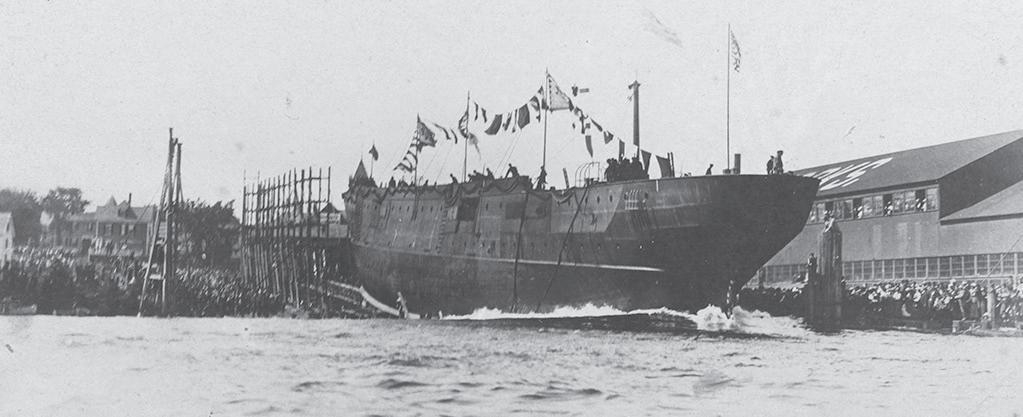
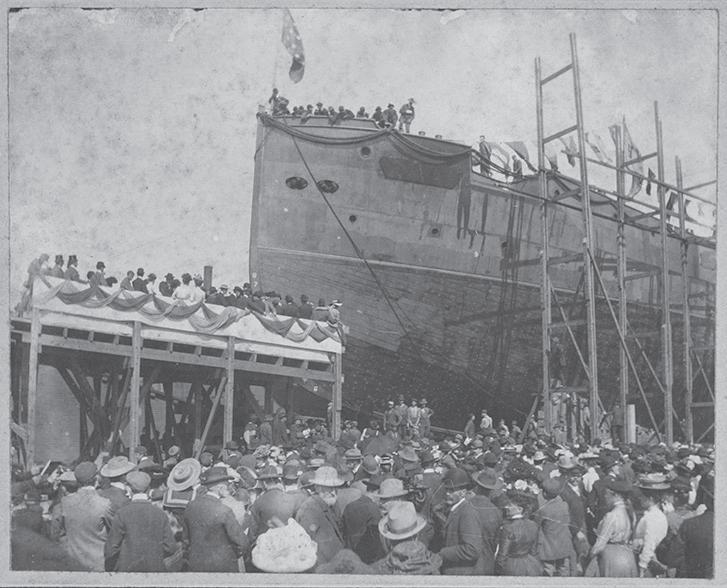
With the construction of the land level transfer facility at the south end of the yard, ships are now built on a marine railway system and rolled into a dry dock, where they are floated. Though still fascinating, this method lacks the sudden, dramatic energy of a traditional launch.
Today, the physical act of launching is no longer part of the public celebration—but the christening ceremony
Talking scallops with Sam Belknap
Another aquaculture sector is growing
NAME: Sam Belknap
TITLE: Director of Island Institute’s Center for Marine Economy
FOCUS: I direct work aimed at protecting and sustaining Maine’s working waterfronts, as well as advancing the use of electric outboards for our commercial fleet, and expanding aquaculture businesses.
IN THIS PHOTO: Seen at far right, I’m moderating a panel discussion at Damariscotta’s Lincoln Theater on July 7 as part of a “Talking Aquaculture” series. The panel included, from left, Hugh Cowperthwaite, senior program director for fisheries and aquaculture at Coastal Enterprises, Inc.; Emma Fernald, owner and operator of Bay Lady Scallops; and Dana Morse, aquaculture lead at Maine Sea Grant. The presentation was part of our work increasing the awareness of and support for Maine aquaculture to grow this important economic sector, which we believe builds from and supplements our fishing heritage. Dana and Hugh talked about their efforts in bringing scallop aquaculture to Maine, which included exchange trips to Japan. Emma, a seventh-generation lobster harvester from Islesford (Little Cranberry Island), spoke of facing a decades-long wait to get her lobster license, and how she took the plunge into scallop aquaculture to maintain her working connection to the water.
still draws crowds, preserving a vital piece of maritime tradition.
Kelly Page is curator of collections at Maine Maritime Museum. Current special exhibitions include Upta Camp and Upon that Isle in Maine: The Story and Works of Chris Van Dusen. Plan your visit and explore upcoming events at mainemaritimemuseum.org
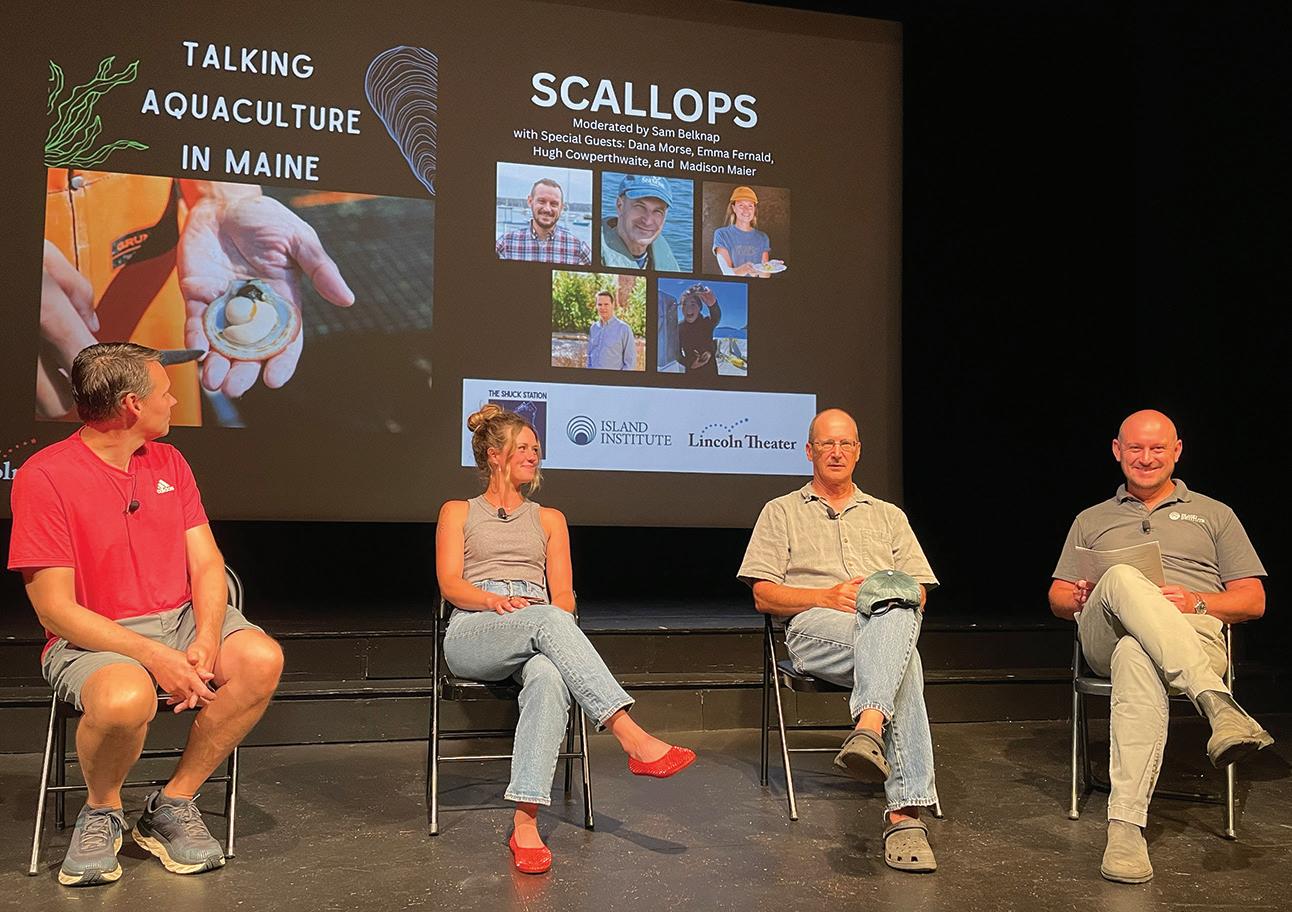
Consider joining us at our next conversation on the benefits of aquaculture. And while you’re waiting—I hear you can get farmed scallops anytime of the year if you know the right people. Right Emma?
Colby Adolphsen’s LEGO harbor town
Artist builds
a waterfront
in miniature bricks art of the waterfront
BY CARL LITTLE
VISITING COLBY ADOLPHSEN’S website, you’ll find this quote from Vincent Van Gogh: “Great things are done by a series of small things brought together.” It’s a fitting reference when you realize the primary materials for Adolphsen’s art are LEGO bricks.
Born in Rockport and raised in Appleton, Adolphsen remembers first playing with LEGO as a youngster (the mid-1990s) when his older brothers occasionally let him use their kits. Then one day, at age five or so, he walked to the downtown 5&10 to purchase his first set. The dye was cast—in the shape of small bright-colored building blocks.
Today, Adolphsen is acclaimed for his elaborate LEGO creations. These include a commissioned replica of Chris Van Dusen’s circus ship, one of the stars of the famed children’s book author’s immersive show at the Maine Maritime Museum in Bath (through March 29, 2026). He is currently finishing up a LEGO schooner inspired by the Stephen Taber out of Rockland.
Among Adolphsen’s most ambitious LEGO creations to date is “Harbor Town.” The idea for this project came from a desire to build a small town with a harbor as its centerpiece. The work would reflect elements of certain communities—Rockport, Camden, Damariscotta, Thomaston, Rockland, and Stonington—familiar to the builder.
Adolphsen began with a loosely sketched bird’seye view of the layout that included the overall size, the buildings and various landmarks. He used

Colby Adolphsen with
photographs of real places as reference to fashion some of the LEGO structures.
The most satisfying aspect of creating “Harbor Town,” Adolphsen writes, is the way each area and building complements one another “to form a cohesive scene.” The most challenging? “Trying to figure out the right compilation of buildings, scenes, and colors to add,” he says.
Adolphsen is wary in his LEGO builds of “overcrowding.” Finding just the right amount of waterfront activity was important.
The detail is astounding, from a wall of hardware store tools and a diner grill to a lobster boat in drydock. Fishermen work on the wharf, a girl walks a dog, a boy fishes off the bridge. Vintage dollhouse stickers provided the aesthetic Adolphsen wanted for the signage: “Town Talk Bread,” “Burdan’s Ice Cream,” “Princes Lobster,” etc.
Adolphsen won a prize for “Harbor Town” at 2024 BrickUniverse in Portland. The piece will be on display at the Brick Store Museum in Kennebunk, Aug. 2-Nov. 9. The exhibition, “Art of BRICK: LEGO

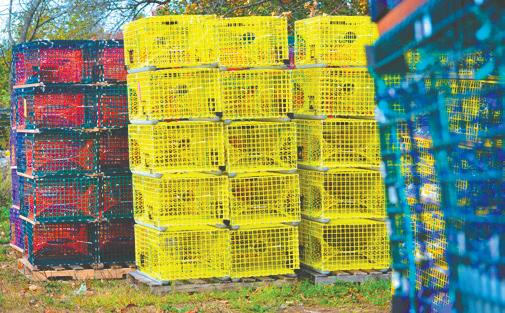

•
•
• One of the most important investments you will make to your
•
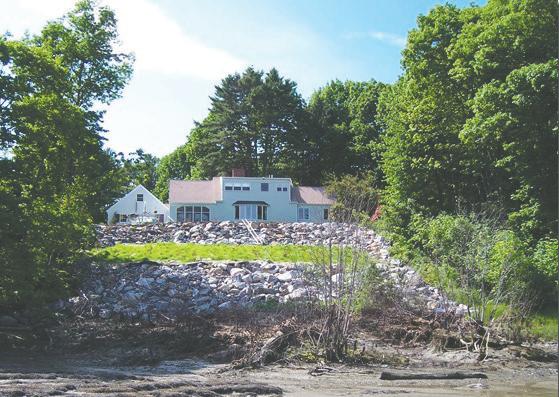

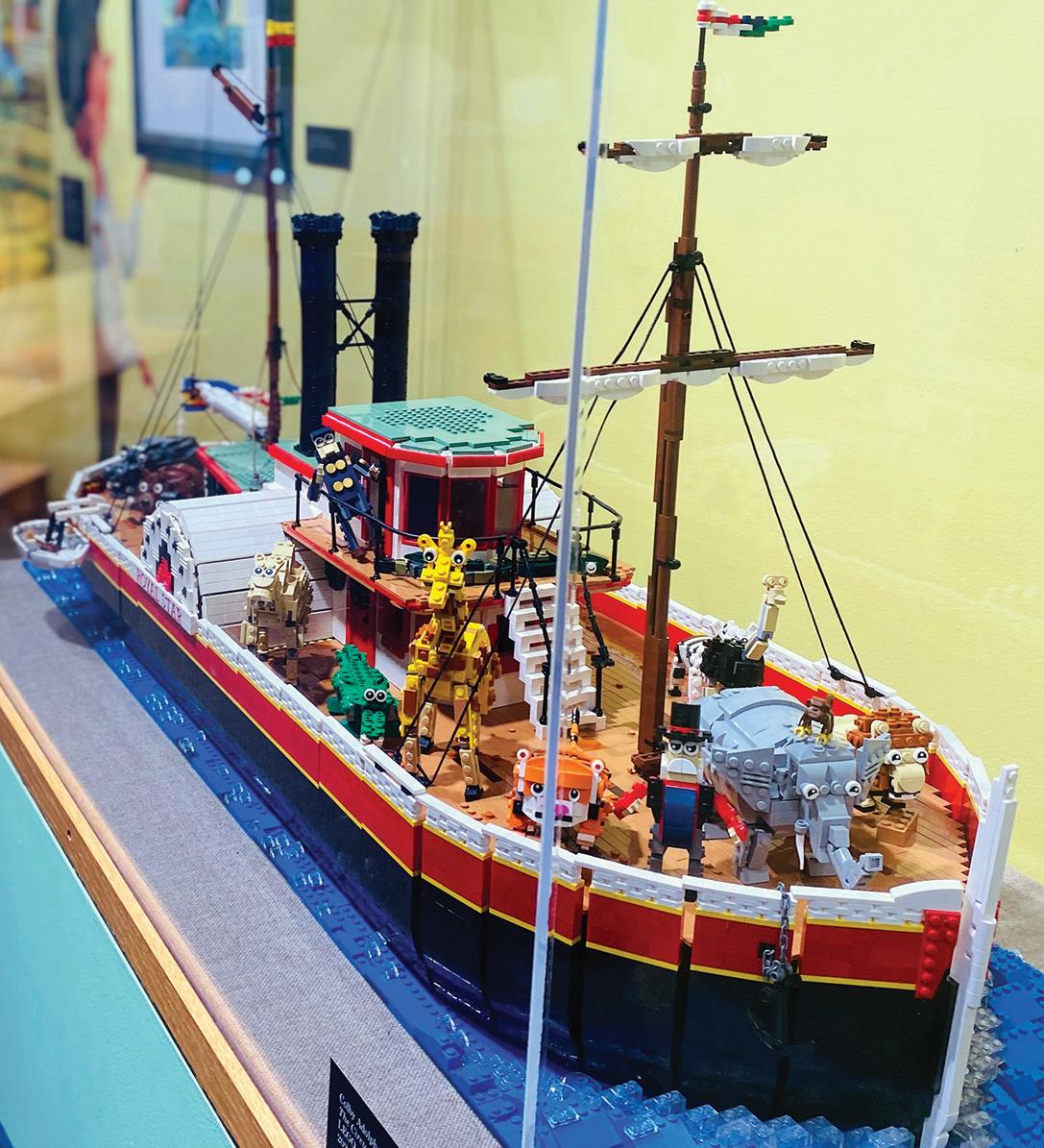
Buildings Installation,” features his latest creation, a model of the museum itself.
When he isn’t creating LEGO models, Adolphsen is a data analysist at Pen Bay Medical Center in Rockport. He holds a BS in biology from the University of Maine and an MBA from Husson University.

Adolphsen and his wife Samantha’s two sons, ages 6 and 3, are “huge” LEGO fans. He is sure the baby girl who recently joined the family will be a builder too. More of Adolphsen’s work can be found at colbyadolphsen.com where you can also tour “Harbor Town.” His LEGO replicas of the Camden Public


The
room opens into a screened porch connected to the
and barn. There are four bedrooms on the second floor with two full baths, one of which connects to the master suite. The grounds are lovely with an English garden with small, raised beds for veggies and areas of perennials surrounded by boxwood edgings. An espalier pear tree graces an exterior wall in the garden area. Easy access to 3 well-known area restaurants, tennis courts, dock, mooring area and beaches all within a two-mile radius of the property on the Hancock Point Peninsula. $850,000.

Library and the Woodlawn Museum in Ellsworth can be viewed at those venues.
Carl Little curated “Quarries: Muse and Material” on view at the Monson Arts Gallery through Nov. 1.
